
- Analytics platform
- Session replay
- Conversion funnel
- Event analytics
- Usability testing
- Customer support
- Campaign validation
- Get started
Table of Contents
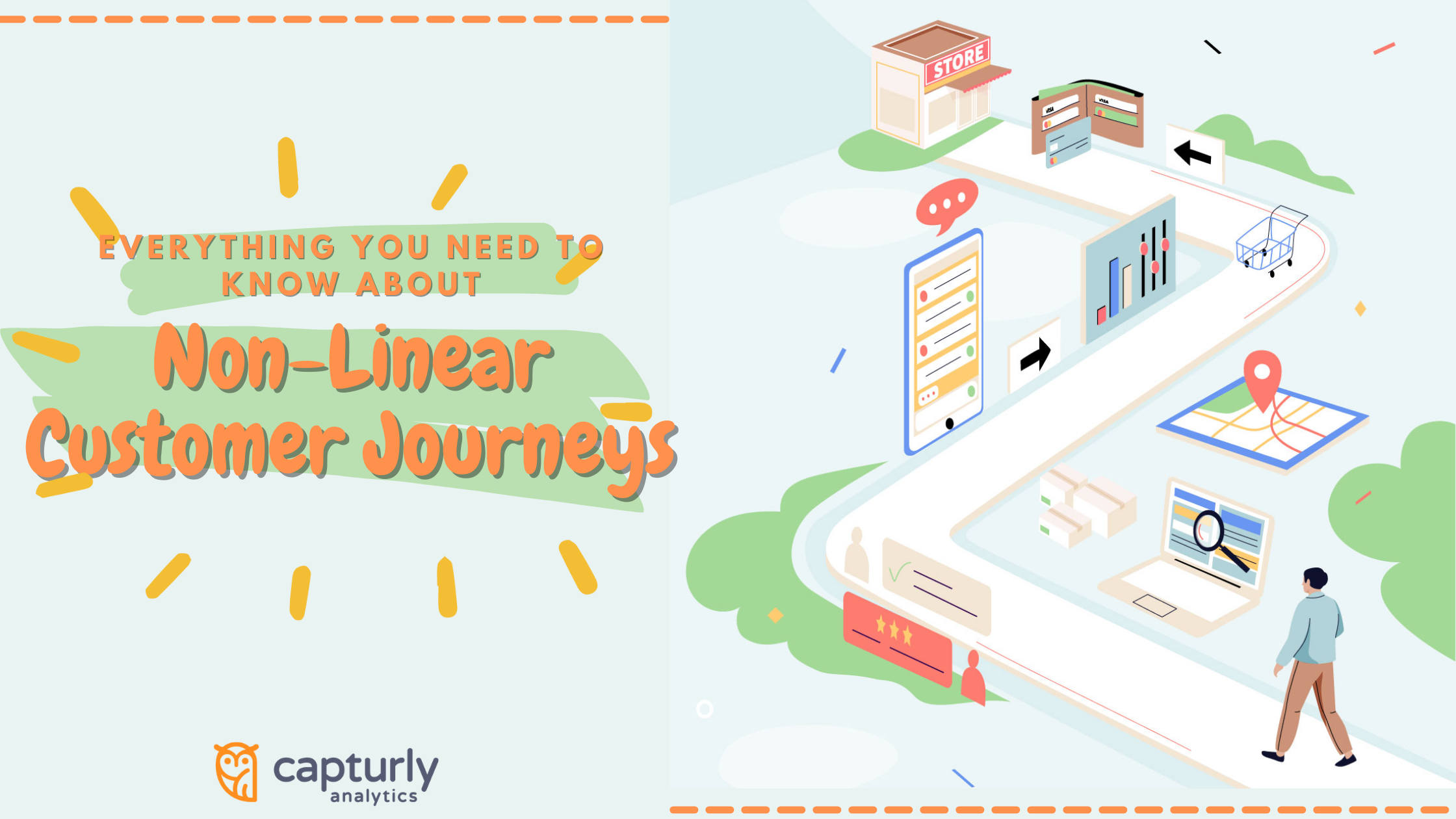
CRO , E-commerce

Everything You Need to Know About Non-Linear Customer Journeys
Did you know that 86 percent of senior-level marketers agree that it is crucial to create a cohesive customer journey across all touchpoints and channels? However, in our ever-evolving digital world, the classic AIDA model and the linear buyer’s journey are just simply not enough.
Customer expectations are assuredly going through a considerable transformation. Can your brand and website meet these expectations and guarantee that the customer journey is smooth?
In this article, we will take a look at what a nonlinear customer journey is, and how to optimize your e-commerce site for nonlinear customer journeys. Also, we will give you a few tips and tricks on how to build a funnel for different types of buyer’s journeys. And even introduce you to a few tools to optimize your website and conversion rates.
Are you interested in using the full potential of an optimized nonlinear customer journey? Keep on reading.
What is the difference between Buyer’s, and Customer Journey?
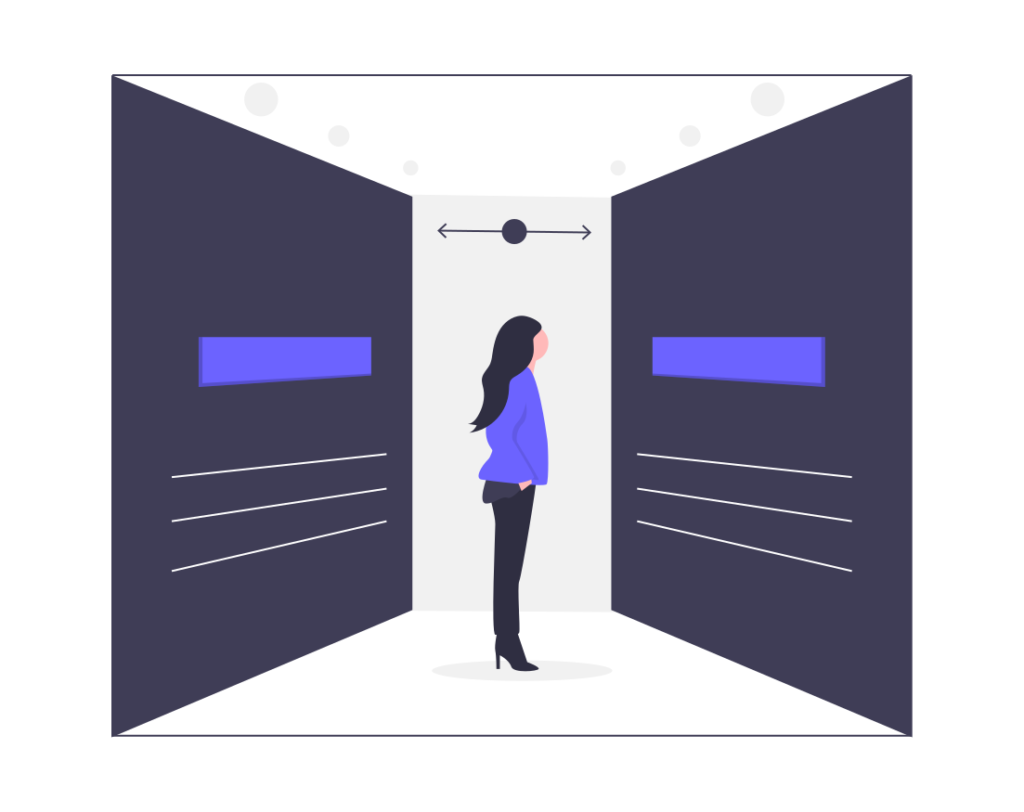
The buyer’s journey
The buyer’s journey consists of the stages that a consumer undergoes to make a purchase decision on a product or service from a specific web development company . A simple buyer journey includes three stages: awareness, consideration, decision. In the awareness stage, buyers realize that they have a problem that needs to be solved so they try to find a solution to that in the consideration stage. Finally, they decide on what product or service is the best for their specific problem in the decision stage.
The AIDA model
This is where the AIDA model comes into play for those on the other side of e-commerce. It is also called the hierarchy of effects model, which actively demonstrates that the consumer must go through each and every stage to complete the aspired action. The AIDA is short for attention, interest, desire, and action. It follows a simple logic to convert a potential buyer into an actual paying customer.

First, you need to attract attention with brand awareness or great copywriting . After that, you have to generate interest and “hook them” to engage. Then comes the part where you should stimulate desire, to make people feel like they want your product or service. Lastly, you need to spur into action so they actually decide on buying it.
Based on these, the buyer’s journey ends with the purchase. However, in real life, this is not the case because your relationship and contact with the customer do not end when they have made the act of buying.
The Customer Journey
This logic is followed by the customer journey theory. Customer journey helps to understand the interactions of a certain persona with your digital product. It visualizes your persona’s path which is the process of them getting in connection with your digital product. After all, the real success of a business ultimately depends on customer retention. A classic customer journey consists of five stages:
- consideration
As you can see, the first two stages are similar to the concept of the AIDA model. The main difference is that the act of buying is the last stage of the buyer’s journey, however, it is right in the middle in the case of the customer journey. Then come retention and advocacy which play a key role in judging your business because of the event happening here (product receipt, issues, and response, social complaint, etc.).
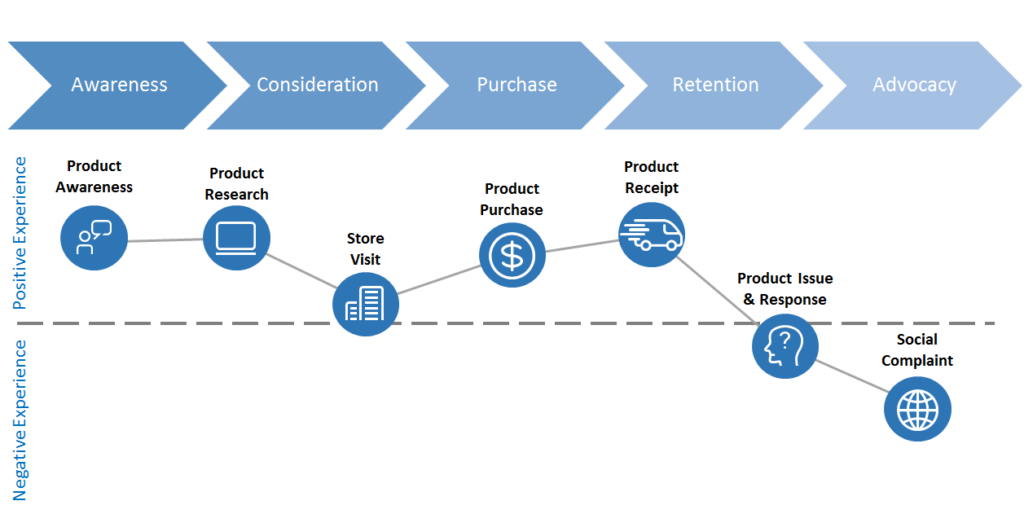
All things considered, it is not that simple for business owners or anyone else included in e-commerce. Nowadays, this journey is a lot more complicated. When a salesperson managed the buyer’s journey, it was enough. Today buyers are in control. With plenty of information on the internet, media consumption, and the possibility to connect with almost everyone in the world is significant. As a result, buyers no longer follow a linear path with a clear beginning, middle, and end.
What are nonlinear customer journeys?
The in-question purchasing process makes people go round and round, back and forth between ads, forums, social media, e-commerce websites, emails, blogs, etc. Present days, making a quick and assured buying decision is rare, the only exception may generally appear in the case of FMCG products. With this in mind, be it marketing, sales, or conversion the funnel is not the right way to represent a customer journey, the particular reason for this circumstance is that it is not linear.
To stay up to date and get the most out of our business, you need to think in a non-linear customer journey. To give an illustration, some display this journey as a circle, others represent them as a shapeless interconnected process. Besides that, however, their other characteristics are the same. In the case of non-linear journeys, customers can enter, exit, jump, turn back, get stuck, etc. at any level, any time.
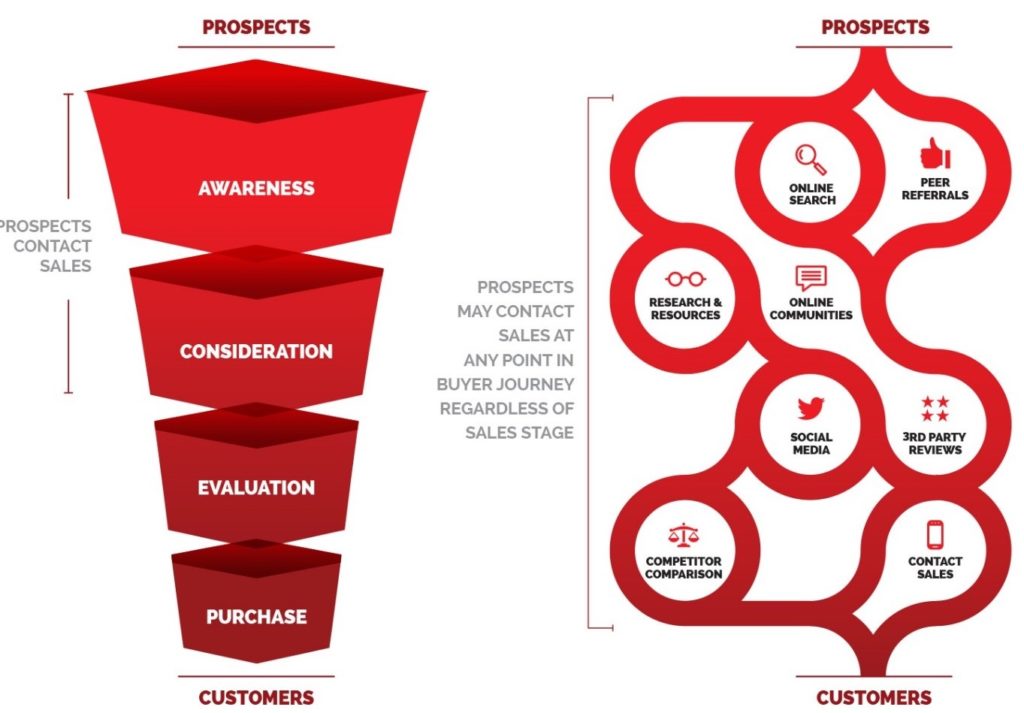
People are just a few clicks away from personalized product recommendations, many comparisons on products and services , review sites, and even proposals and pricing from other companies, competitors. People interact with brands across many touchpoints, and they determine their own path to purchase. It is clear to see that the traditional marketing tools and web optimization strategies are out of date, we need something else, different, and better.
The importance of a customer journey maps
A customer journey is about understanding your users, how they behave while they are visiting your website, and what you can do to improve their journey, so they continue coming back to you. How to do that?

The answer is customer journey mapping ! It is a visual representation of the process a customer or prospect goes through to achieve a goal with your company. With the help of a customer journey map, you can get a better idea of your customers’ motivations, needs, and pain points. Analyzing user behavior also helps your business to learn how your customers travel through the whole sales process and how they feel during their time there. With this method, decision-makers can focus on the customer, and make sure that every step of the conversion funnel is optimized to make the buying experience easier and more satisfying for the leads.
How to build a funnel for nonlinear customer journeys
To build a funnel for non-linear customer journeys, you need to map out the customer journey first. In this section, we will show you how to do that step-by-step.
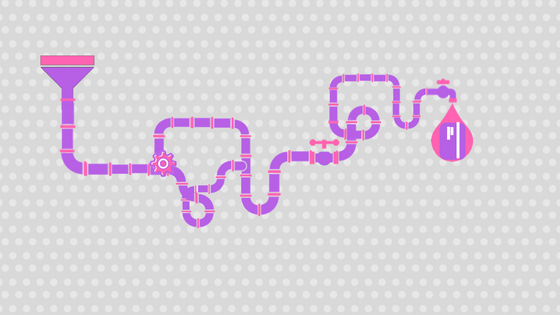
1. Set your goals
First thing first, you need to clarify why you want or need this customer journey map. Define your goals with mapping, who it is about, what the basis is. Asking yourself these questions might ring the bell, that you need to create buyer persona(s). A persona has all the demographics and psychographic features that characterize your average customer.
2. Create your buyer persona
There are several ways to create a profile for your persona . Working with customer feedback or simple questionnaires is a simple way to get to know them more. Ask questions about how they heard about your company, what they find attractive, their goals with your business or what problems they solve with it, etc.
Another way is user testing and website analytics. Here you should focus on how much time they spend on your website, how they navigate, the usage of support, etc. There are full-scale online web analytics tools that serve you the most important metrics on a silver plate. Get visualized data about the volume of your visitors, visited pages, and the load time of your pages. Also, you can check the source of traffic and what devices they are coming from.
3. Choose your target audience
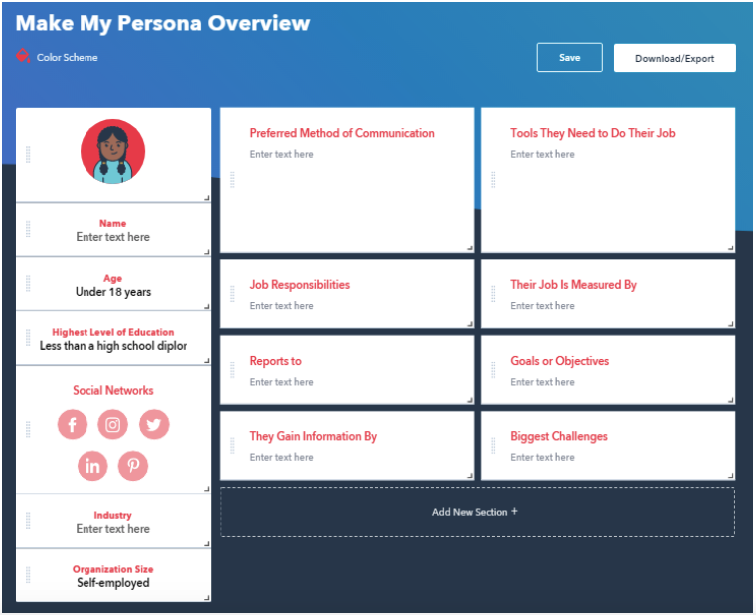
Now you know your personas. After that, if you have a generous number of them you need to narrow them down to have an optimizable funnel and an accurate customer journey map. Remember, a customer journey is a path that tracks a persona’s experience with your website. It will not be accurate if you group too many people personas in a customer journey. Picking the most common persona is a great choice for your first customer journey map.
4. Determine the touchpoints
Once you have picked the accurate persona, you need to determine all the points where they meet with your product, service, or business. This step is important in the mapping process because this way you can understand the objectives of the customer journey. You need to look beyond your website and think about channels like social media, paid ads, email marketing, review sites and forums, blog, etc.
This way you have a better idea of what actions your customers take, and what are the emotions and motivations behind those actions. By recognizing these motives you can actually see what the main obstacles and pain points are.
5. Create a graphic for your map

There are countless options for creating graphics for non-linear customer journey maps as well. Regardless of the type, you should display actions, thoughts, and emotions. Apply visual elements for faster analysis.
6. Analyze and optimize
Creating a customer journey map usually makes you realize your job is not done yet. You need to analyze and make changes based on the results. It does not matter how small or big the adjustments are, they will probably be effective because you do them based on real user data.
But how can you do that? In this case, we can also call web analytics tools for help.
Capturly’s conversion funnel tool
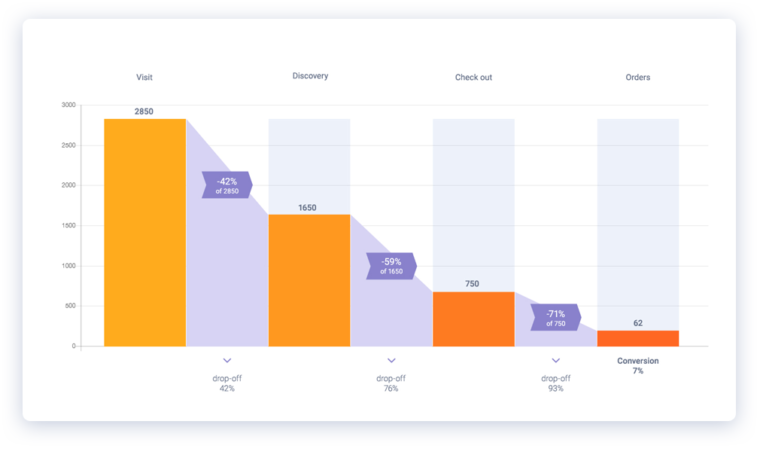
You can track your traffic and drop-offs at every stage of your conversion funnel . There are effective tools for that on the market, such as Capturly’s conversion funnel tool. This tool enables you to identify key user journeys and get more information about the stages. With all the knowledge provided, it allows you to analyze all the data and get the maximum potential out of your website. By analyzing the user journey stages, you can find out where the number of your visitors drops off and why.
Setting up conversion funnels in Capturly is simple. You have the ability to define each step of your funnel by adding the URL of a certain page. Also, you can go advanced and create custom events to track multiple conversion funnels. Make your onboarding process user-friendly and catch your users before it’s too late. Do not forget, the success of your conversion funnel is the success of your e-commerce website.
How to optimize non-linear customer journeys
Now that we learned what is the difference between buyer’s journey and customer journey, why the traditional linear path is not relevant anymore, and saw how to build a funnel it is time to understand how you can optimize your e-commerce website for non-linear customer journeys. Tools and strategies are similar, the key is in how you use them.
1.Identify customer behavior

It is the first step to a successful optimization strategy. You need to know how your customers behave, understand their value drivers and touchpoints with your business. It is actually pretty similar to mapping out a customer journey, but this time you need to map your customer KPIs with operational KPIs. Some of the most common KPIs to use in this case are:
- NPS: Net Promoter Score
- CSAT: Customer Satisfaction
- CTAs: Engagement with Call to Actions
- Retention rate
- CLV: Customer Lifetime Value
2. Influencer marketing
Influencers play a huge part in today’s marketing activities. They have the power to influence people to jump funnels or stages within the customer journey. Behind the psychology of influencer marketing is that people prefer to believe in other people’s opinions. It is definitely worth investing in third-party endorsements and brand ambassadors promoting your business if you have not already.
3. The power of communities
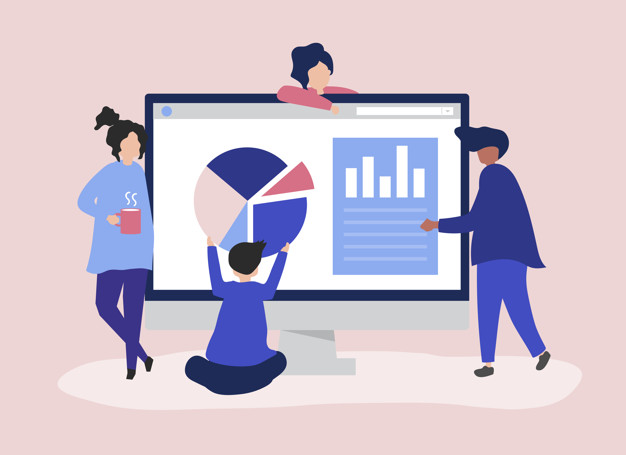
This is an idea similar to the previous point. Most people are members of different types of communities like personal or professional. The appearance and spread of these are determined by social media sites like Facebook, LinkedIn, Twitter, etc. In these communities, potential buyers can find solutions to their problems, get to know more about the products.
It is worth investing time and energy (and some money) into these social groups. Create content like articles, guides, infographics, valuable insights, case studies to get the awareness and push your leads and potential buyers to the consideration stage. To avoid people exit or turn back from this stage, you need to create good public opinion. If someone has a bad experience with your product or service at any stage, you should solve their problem as soon as possible and compensate them to avoid negative reviews and public voice.
4. Strengthen the impulse purchase with FOMO
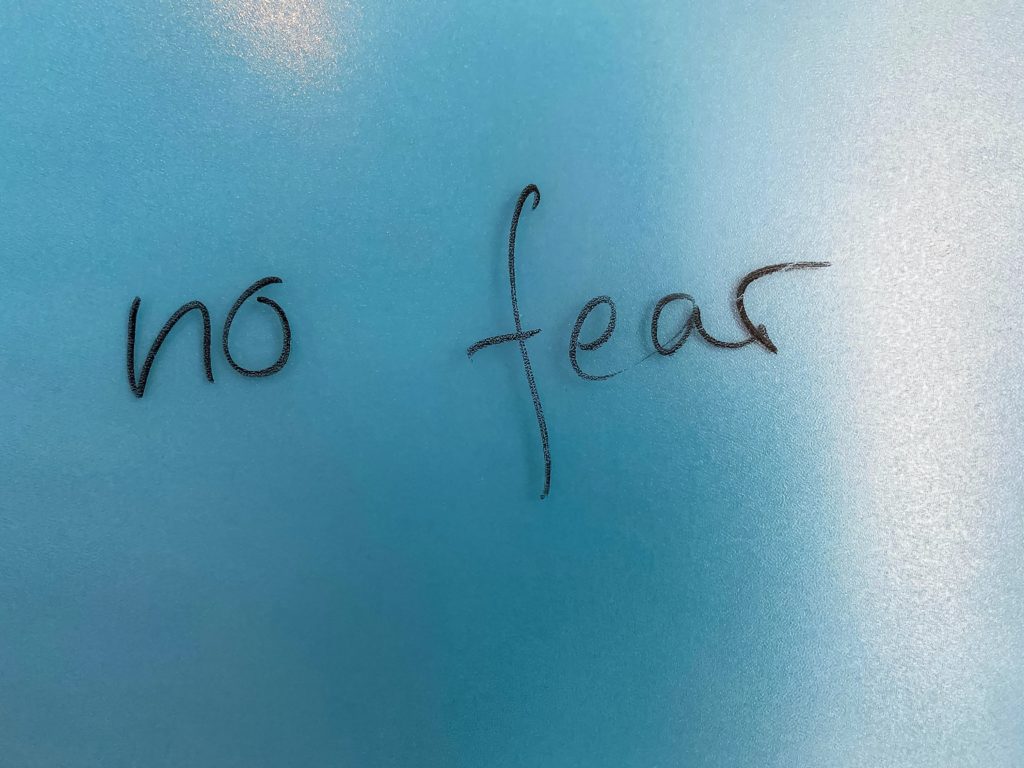
If you want to encourage leads to move on in the non-linear customer journey, you should strengthen the impulse purchase with the fear of missing out. This technique can shorten the funnel significantly. There is simple psychology behind this phenomenon: people do not want to miss out on anything in our tech-savvy, ever-evolving world. Offer great time-bound deals to motivate potential buyers with the idea of getting the best deal if they buy your product or service right there, in a short period of time. Just along the line of how lifetime deals work in the SaaS (software as a service) world.
5. Call back potential buyers
Now customers are aware of your product or service, they are in the consideration stage already, but converting them into paying customers still seems particularly difficult. What can you do?
Cashback and refund policies
If you are facing doubtful or skeptic buyers, offering cashback and refunds could be a great sales solution. This gives them just enough support that makes it easier to get themselves buying.
Coupons and Vouchers
In case you are aware that you are targeting price-sensitive personas, coupons and vouchers are an excellent way to encourage them to make the purchase decision. If you are selling a product you have the chance to offer free shipping as well. It is a great strategy if you see a high bounce rate on the pages where you show the full price like order confirmation, shipping information, cart value, etc.
6. Optimize your website with web analytics
If you really want to step up your optimization game, you should definitely try website analytics tools. There are great and effective free options on the market like Capturly analytics if you are unsure or just not convinced yet.
Session replays
With session recording , you can see what your visitors do. Every click, scroll, and mouse movement. It is an excellent way to discover if your visitors encounter any problem on your website. It helps you understand the people behind the numbers. With this help, you can find the problematic sub-pages where people may exit or turn back in the customer journey. It can be just as simple as a bad CTA, unnecessary log-in process, or a hidden search option. Fixing these problems will help you get them to move on and actually buy your product or service.
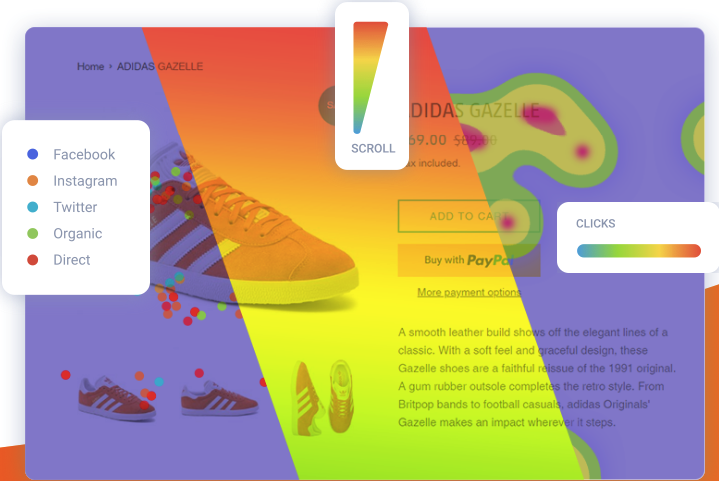
Website click heatmaps show you an aggregated picture of your users’ clicks. With this tool, you can find the popular CTAs, texts, and images. It is beneficial, the particular reason for this circumstance is that it tells you which parts of your website should be clickable and which should not. Also, there are scroll heatmaps , which are able to show you how far your visitors scroll down on your website. It is important when you want to make sure that people on your website see certain content or CTA. It can also be a threatening sign where your visitors leave your website without completing the desired action.
These website analytics tools help you with the optimization process of your website. With this in mind, you need to assure that your users experience a smooth UX on your website. This will significantly increase the chances of your lead progressing on the journey.
7. Retargeting
Retargeting is a powerful and effective technique to push people to remain in your sales funnel and move on in the non-linear customer journey. You can get more information and insights on how people use your website so you have the chance to optimize your site and target your audience. With this, you can increase your brand awareness as well.

8. Redefining advocacy
Social influence is huge. Businesses need to be aware that people who are not their customers can easily be the biggest advocates and product evangelists and vice versa. Consumers engaging with brands through events, content, social media, etc. As we have already discussed, people can enter in a non-linear customer journey anytime, anywhere. Even if you do not pay much attention to these elements yet, you need to focus on public opinion, brand ambassadors, and advocates because their presence and power can be decisive.
Wrapping up
To sum up everything that has been stated so far, linear customer journeys are dying. To keep up with your competitors, you need to recognize the changes in the e-commerce world and the importance of non-linear customer journeys. Building a funnel and mapping a customer journey is a basic step to success. But you need to analyze and optimize for a better customer journey, smoother user experience , and optimized website. As in many other areas of the digital world, in this case, we can also use the help of web analytics tools. Most importantly, do not forget that it is a never-ending and continuous process.
Related posts:
Don't forget, sharing is caring! :)
Learn with our growing community! We show you how to convert one time visitors into actual paying customers We at Capturly respect the privacy of our readers. Therefore, the information you provide will be only used to inform you about upcoming relevant content and product update. If you are unsatisfied, you are free to unsubscribe whenever you desire. Leave this field empty if you're human: 7 Comments
Sanchita Bhaduri
Very good blog
Great post. I write and manage two blogs by myself and I know the efforts it takes to write such an elaborate one.
Fintech App Development
Thanks for sharing this great information your content is very informative keep sharing like this.
very good article by the way , thanks for sharing this!
Metaverse NFT Marketplace Development
I really enjoyed reading your blog post about non-linear customer journeys. I think it’s an important topic that businesses need to be aware of. In today’s digital world, customers are more likely to have a non-linear journey than a linear one. This means that they may interact with your brand in a variety of ways, at different points in time, and through different channels. It’s important for businesses to be able to track and understand these interactions so that they can provide a seamless customer experience.
Leave a Reply
Copyright © 2023 Capturly Inc. All rights reserved.

What is the Customer Journey? Definition, Stages, Examples

In the world of business, understanding the customer journey is crucial for success. By knowing what customers are thinking at each stage of their journey with your business, you can create more relevant and targeted marketing messages, develop better products and services, and provide a more seamless and enjoyable customer experience.
But what even is a customer journey? In this article, we're delving deep into the meaning of the customer journey, exploring its various stages and providing real-world examples from different industries.
What is the customer journey? Definition
The customer journey is the process a customer goes through to purchase and use a product or service. It begins with the customer becoming aware of your brand and ends with them becoming a loyal customer or advocate.
The customer journey is not always linear, and customers may move back and forth between stages as they learn more about your product or service and make their purchase decisions.
It also depends heavily on the industry you’re working in and the product or service you’re offering, since this can impact the way the customer interacts with your brand and your product.
Why is the customer journey important?
Understanding the customer journey is important for businesses because it can help them improve the customer experience and increase sales.
By mapping and understanding the customer journey, businesses can engage with their customers at the right time and with the right message, making interactions more relevant and meaningful.
A happy customer is more likely to make a purchase and become a loyal customer, and having a solid grasp of the customer journey and improving the customer experience helps you improve brand loyalty and grow your customer base.
The stages of the customer journey

The customer journey is not a one-size-fits-all model; it varies from industry to industry and from one customer segment to another. However, a standard journey can be divided into five main stages:
- Awareness – this is the stage where the customer becomes aware of your brand and its products or services. This can happen through various channels, such as advertising, social media, search engines, or word-of-mouth.
- Consideration – once the customer is aware of your brand, they will begin to consider whether or not it is the right choice for them. This is where they will compare your products or services to those of your competitors and read reviews from other customers.
- Decision – this is the stage where the customer makes the decision to purchase your product or service. This decision is often influenced by a variety of factors, such as price, features, benefits, and the customer's overall experience with your brand.
- Post-purchase – once the customer has purchased your product or service, they will use it and evaluate their experience. This is where they will form an opinion about your brand and decide whether or not to purchase from you again in the future.
- Advocacy – if the customer is happy with their experience, they may become a brand advocate and recommend your products or services to others. This can happen through word-of-mouth, social media, or online reviews.
Examples of customer journeys
Understanding the theoretical framework of the customer journey is essential, but seeing it in action through real-world examples can provide deeper insights into how different businesses and industries leverage this concept.
Example 1: E-Commerce - Amazon
- Awareness: A customer browsing the internet encounters Amazon ads while searching for various products online.
- Consideration: The customer clicks on Amazon's link, explores product listings, reads customer reviews, and adds products to their shopping cart.
- Decision: After comparing prices and reading reviews, the customer decides to purchase a laptop.
- Post-Purchase: The laptop arrives on time, and the customer enjoys a seamless experience. In case of any issues, Amazon's customer support provides quick solutions.
- Advocacy: Pleased with their experience, the customer leaves a positive review, recommends Amazon to friends, and may join the Amazon Prime program for additional benefits.
Example 2: Hospitality - Marriott Hotels
- Awareness: A traveller researching accommodations for an upcoming trip comes across Marriott's website or mobile app.
- Consideration: The traveller explores different Marriott properties, reviews amenities, checks prices, and reads guest reviews.
- Decision: Impressed with the reviews and amenities, the traveller books a room at a Marriott hotel.
- Post-Purchase: During their stay, the traveller enjoys a comfortable room, excellent service, and various amenities. The hotel staff is attentive to any requests or concerns.
- Advocacy: Delighted with the experience, the traveller leaves a glowing review on a travel website, shares photos on social media, and recommends Marriott to fellow travellers.
Example 3: Software - Microsoft Office 365
- Awareness: A small business owner hears about Microsoft Office 365 from a colleague.
- Consideration: The business owner researches Office 365 online, watches demo videos, and reads case studies about other businesses benefiting from the software.
- Decision: Convinced of the benefits, the business owner subscribes to Office 365 for their company.
- Post-Purchase: Microsoft offers excellent customer support and resources to help the business owner get the most out of Office 365. Any issues or questions are addressed promptly.
- Advocacy: Satisfied with the software and Microsoft's support, the business owner recommends Office 365 to other business owners, becoming an advocate for the product.
These examples illustrate how the customer journey varies across industries and customer segments. In each case, the customer's path involves distinct stages, and the brand's ability to cater to the customer's needs at each stage significantly impacts the overall experience.
Creating a customer journey map
To effectively leverage the concept of the customer journey, businesses must map it out. Mapping the customer journey involves creating visual representations of the stages and touchpoints, which can help identify pain points, opportunities for improvement, and areas where personalization is most critical. Here's how to create a customer journey map:
- Identify Customer Personas. Start by understanding the different customer segments or personas your business serves. These are distinct groups of customers with different needs and behaviours.
- List Key Touchpoints. Identify all the touchpoints where customers interact with your brand. This includes your website, social media, email, phone calls, physical stores, and any other relevant channels.
- Map the Stages. Create a visual representation of the customer journey, beginning with awareness and ending with advocacy. For each stage, detail the customer's goals, emotions, and actions.
- Highlight Pain Points. As you map out the journey, identify pain points where customers may encounter challenges or frustrations. This can include slow website loading times, unclear product information, or poor customer service.
- Optimise the Journey. With a clear map in hand, prioritize areas for improvement. These improvements might involve website enhancements, better customer service training, or more personalized marketing campaigns.
Challenges of mapping the customer journey
While optimising the customer journey is crucial for businesses, there are common challenges that companies may encounter along the way. You need to be aware of these challenges and develop strategies to overcome them:
- Lack of Data. Insufficient customer data can hinder personalization efforts. To address this, businesses should invest in data collection and analysis.
- Inconsistent Customer Experience. Inconsistent experiences across different touchpoints can be frustrating for customers. Maintaining brand consistency is vital.
- Overwhelming Options. Too many options during the consideration stage can overwhelm customers. Businesses should guide customers with relevant information and recommendations.
- Inadequate Post-Purchase Support. Neglecting the post-purchase stage can lead to customer churn. Offering excellent post-purchase support is essential.
- Ignoring Negative Feedback . Negative feedback is an opportunity for improvement. Ignoring it can damage a brand's reputation.
- Failure to Adapt. Customer preferences and behaviour change over time. Businesses must adapt and update their customer journey strategies accordingly.
Final thoughts
The customer journey is not just a concept; it's a strategic framework for building lasting relationships with customers. By defining the stages, mapping the journey, and leveraging technology, businesses can create exceptional experiences that lead to customer
Remember that the customer journey is not static; it evolves as customer preferences change and technology advances. By defining the stages, mapping the journey, and leveraging technology, businesses can create exceptional experiences that lead to customer satisfaction, loyalty, and advocacy.
Join 34,209 IT professionals who already have a head start
Recommended content.

Vespa.ai: Executive Overview
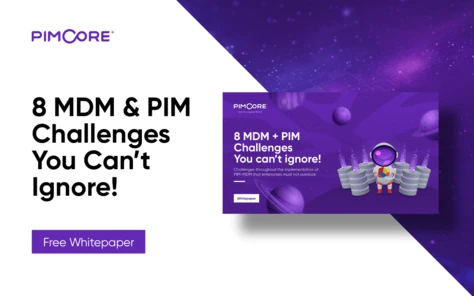
Pimcore: 8 MDM & PIM Challenges You Can’t Ignore

Digital Transformation Week Unveils Keynote Topics: Empowering Enterprises with Real-World Insights

Generative AI and Deepfake Expert, Henry Ajder to discuss the impact of generative AI on cybersecurity at Infosecurity Europe 2024

Introducing the Cyber Security & Cloud Congress North America 2024, just 10 weeks away!

Radware: Why API Gateways Are Not Enough to Secure APIs

Radware: Challenges in Application Security

Radware: Overcoming Staff and Skill Shortages in Application Protection

Radware: Behavioral Burst-Attack Protection

IoT Tech Expo North America 2024 Agenda Preview: Explore Latest IoT Innovations
Trending Content

Darktrace Acquired by Private Equity Firm Thoma Bravo in $5 Billion Deal

Top 10 Data Aggregators for 2024

Meta’s AI Splurge Causes Overnight Share Slump

What is an IoT Attack and How Can you Defend Against it?

What is Data Architecture? Frameworks, Principles, Examples

What is MFA Fatigue and How can you Defend Against it?
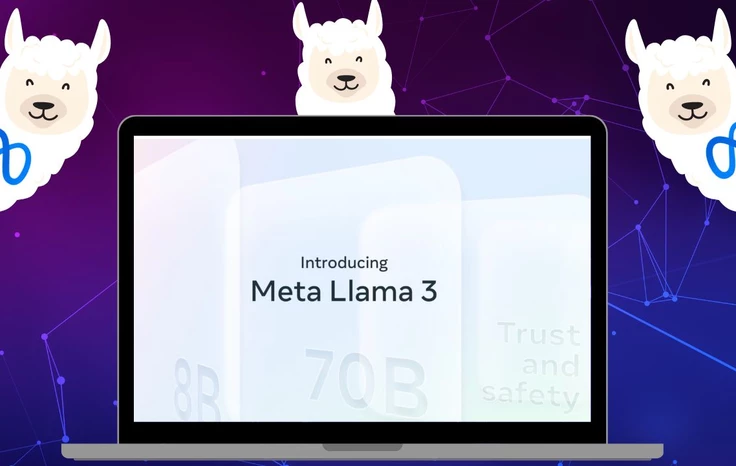
What is Llama 3? Everything you Need to Know About Meta's New AI

Patient Data Leaked Following Change Healthcare Cyber Attack
Customer Journey Maps: How to Create Really Good Ones [Examples + Template]
Updated: April 17, 2024
Published: May 04, 2023
Did you know 70% of online shoppers abandoned their carts in 2022? Why would someone spend time adding products to their cart just to fall off the customer journey map at the last second?

The thing is — understanding your customer base can be very challenging. Even when you think you’ve got a good read on them, the journey from awareness to purchase for each customer will always be unpredictable, at least to some level.

While it isn’t possible to predict every experience with 100% accuracy, customer journey mapping is a convenient tool for keeping track of critical milestones that every customer hits. In this post, I’ll explain everything you need to know about customer journey mapping — what it is, how to create one, and best practices.
Table of Contents
What is the customer journey?
What is a customer journey map, benefits of customer journey mapping, customer journey stages.
- What’s included in a customer journey map?
The Customer Journey Mapping Process
Steps for creating a customer journey map.
- Types of Customer Journey Maps
Customer Journey Mapping Best Practices
- Customer Journey Design
- Customer Journey Map Examples
Free Customer Journey Map Templates
.webp)
Free Customer Journey Template
Outline your company's customer journey and experience with these 7 free templates.
- Buyer's Journey Template
- Future State Template
- Day-in-the-Life Template
You're all set!
Click this link to access this resource at any time.
The customer journey is the series of interactions a customer has with a brand, product, or business as they become aware of a pain point and make a purchase decision. While the buyer’s journey refers to the general process of arriving at a purchase, the customer journey refers to a buyer's purchasing experience with a specific company or service.
Customer Journey vs. Buyer Journey
Many businesses that I’ve worked with were confused about the differences between the customer’s journey and the buyer’s journey. The buyer’s journey is the entire buying experience from pre-purchase to post-purchase. It covers the path from customer awareness to becoming a product or service user.
In other words, buyers don’t wake up and decide to buy on a whim. They go through a process of considering, evaluating, and purchasing a new product or service.
The customer journey refers to your brand’s place within the buyer’s journey. These are the customer touchpoints where you will meet your customers as they go through the stages of the buyer’s journey. When you create a customer journey map, you’re taking control of every touchpoint at every stage of the journey instead of leaving it up to chance.
For example, at HubSpot, our customer’s journey is divided into three stages — pre-purchase/sales, onboarding/migration, and normal use/renewal.

1. Use customer journey map templates.
Why make a customer journey map from scratch when you can use a template? Save yourself some time by downloading HubSpot’s free customer journey map templates .
This has templates that map out a buyer’s journey, a day in your customer’s life, lead nurturing, and more.
These templates can help sales, marketing, and customer support teams learn more about your company’s buyer persona. This will improve your product and customer experience.
2. Set clear objectives for the map.
Before you dive into your customer journey map, you need to ask yourself why you’re creating one in the first place.
What goals are you directing this map towards? Who is it for? What experience is it based upon?
If you don’t have one, I recommend creating a buyer persona . This persona is a fictitious customer with all the demographics and psychographics of your average customer. This persona reminds you to direct every aspect of your customer journey map toward the right audience.
3. Profile your personas and define their goals.
Next, you should conduct research. This is where it helps to have customer journey analytics ready.
Don’t have them? No worries. You can check out HubSpot’s Customer Journey Analytics tool to get started.
Questionnaires and user testing are great ways to obtain valuable customer feedback. The important thing is to only contact actual customers or prospects.
You want feedback from people interested in purchasing your products and services who have either interacted with your company or plan to do so.
Some examples of good questions to ask are:
- How did you hear about our company?
- What first attracted you to our website?
- What are the goals you want to achieve with our company? In other words, what problems are you trying to solve?
- How long have you/do you typically spend on our website?
- Have you ever made a purchase with us? If so, what was your deciding factor?
- Have you ever interacted with our website to make a purchase but decided not to? If so, what led you to this decision?
- On a scale of 1 to 10, how easily can you navigate our website?
- Did you ever require customer support? If so, how helpful was it, on a scale of 1 to 10?
- Can we further support you to make your process easier?
You can use this buyer persona tool to fill in the details you procure from customer feedback.
4. Highlight your target customer personas.
Once you’ve learned about the customer personas that interact with your business, I recommend narrowing your focus to one or two.
Remember, a customer journey map tracks the experience of a customer taking a particular path with your company. If you group too many personas into one journey, your map won’t accurately reflect that experience.
When creating your first map, it’s best to pick your most common customer persona and consider the route they would typically take when engaging with your business for the first time.
You can use a marketing dashboard to compare each and determine the best fit for your journey map. Don’t worry about the ones you leave out, as you can always go back and create a new map specific to those customer types.
5. List out all touchpoints.
Begin by listing the touchpoints on your website.
What is a touchpoint in a customer journey map?
A touchpoint in a customer journey map is an instance where your customer can form an opinion of your business. You can find touchpoints in places where your business comes in direct contact with a potential or existing customer.
For example, if I were to view a display ad, interact with an employee, reach a 404 error, or leave a Google review, all of those interactions would be considered a customer touchpoint.
Your brand exists beyond your website and marketing materials, so you must consider the different types of touchpoints in your customer journey map. These touchpoints can help uncover opportunities for improvement in the buying journey.
Based on your research, you should have a list of all the touchpoints your customers are currently using and the ones you believe they should be using if there’s no overlap.
This is essential in creating a customer journey map because it provides insight into your customers’ actions.
For instance, if they use fewer touchpoints than expected, does this mean they’re quickly getting turned away and leaving your site early? If they are using more than expected, does this mean your website is complicated and requires several steps to reach an end goal?
Whatever the case, understanding touchpoints help you understand the ease or difficulties of the customer journey.
Aside from your website, you must also look at how your customers might find you online. These channels might include:
- Social channels.
- Email marketing.
- Third-party review sites or mentions.
Run a quick Google search of your brand to see all the pages that mention you. Verify these by checking your Google Analytics to see where your traffic is coming from. Whittle your list down to those touchpoints that are the most common and will be most likely to see an action associated with it.
At HubSpot, we hosted workshops where employees from all over the company highlighted instances where our product, service, or brand impacted a customer. Those moments were recorded and logged as touchpoints. This showed us multiple areas of our customer journey where our communication was inconsistent.
The proof is in the pudding — you can see us literally mapping these touch points out with sticky notes in the image below.

Don't forget to share this post!
Related articles.
![the customer journey is not linear How AI Image Misuse Made a World of Miscommunication [Willy's Chocolate Experience]](https://blog.hubspot.com/hubfs/ai%20image%20misuse%20the%20willy%20wonka%20experience%20%281%29.png)
How AI Image Misuse Made a World of Miscommunication [Willy's Chocolate Experience]

7 Ways to Delight Your Customers This Holiday Season

14 Customer Experience Fails that Companies Can Learn From
![the customer journey is not linear How Customer Experience Has Evolved Over the Last Decade [+ 2024 Trends]](https://blog.hubspot.com/hubfs/future-of-customer-experience.png)
How Customer Experience Has Evolved Over the Last Decade [+ 2024 Trends]
![the customer journey is not linear Memorable Examples of AR in Customer Experience [+Tips for Implementing the Technology]](https://blog.hubspot.com/hubfs/augmented%20reality%20customer%20experience.png)
Memorable Examples of AR in Customer Experience [+Tips for Implementing the Technology]

Digital Customer Experience: The Ultimate Guide for 2023
![the customer journey is not linear How to Implement a Hybrid Customer Service Strategy That Works [Expert Tips]](https://blog.hubspot.com/hubfs/hybrid%20customer%20service_featured.png)
How to Implement a Hybrid Customer Service Strategy That Works [Expert Tips]

User Flows: 8 Tips For Creating A Super Smooth User Experience

11 Best Practices for B2B Customer Experience
![the customer journey is not linear Customer Experience vs. User Experience: What’s the Difference? [+ Examples]](https://blog.hubspot.com/hubfs/customer-experience-vs-user-experience_2.webp)
Customer Experience vs. User Experience: What’s the Difference? [+ Examples]
Outline your company's customer journey and experience with these 7 free customer journey map templates.
Service Hub provides everything you need to delight and retain customers while supporting the success of your whole front office

Non-Linear Customer Journeys: The what, why, and how
Introduction: embracing the evolving digital landscape.
The digital world is in constant flux, and so are the customer journeys within it. Today's businesses are challenged to move beyond traditional sales funnels and embrace a more robust understanding of non-linear customer pathways. This shift is not just about marketing tactics but involves a comprehensive strategy that enhances digital sales performance and the overall customer experience. By adopting this approach, businesses can stay ahead in the rapidly evolving digital arena.
What are non-linear customer journeys and why should you care?
Non-linear customer journeys refer to the complex and unpredictable paths customers take when interacting with brands, diverging from the traditional, straightforward purchase funnel. In these journeys, customers do not follow a set sequence from awareness to purchase but instead move back and forth across various phases, influenced by a wealth of information available online, social media, and personal preferences.
Let’s take an example from a consumer electronics brand that manufactures and sells smartwatches for athletes. In a linear path, a prospective customer would first be exposed to brand messaging to build brand awareness and pique interest. Next, the customer would be gently nudged toward the consideration phase through more tactical, product-oriented content, visit their online store to compare models and learn more. As a final step (for now), the customer would be persuaded and nudged to purchase an enticing offer served across multiple channels. In a non-linear journey, the prospective customer could have first landed on a product page without any prior knowledge of the brand, added a product to a cart, and subscribed to a newsletter. The brand might still be completely unfamiliar with them, so they’d then familiarize themselves with the brand, perhaps ask a question from customer service for further details, read a few reviews, make comparisons, and finally return to the online store to finalize the purchase.

As you can probably tell, the stages within the journey share similarities, but customers might (or most likely, will) not follow the path you’ve envisioned or mapped. Factoring in this unpredictable and unique behavior between customers is important to ensure you’re managing and optimizing customer journeys effectively.
Leveraging Customer Insights as a Strategic Foundation
The cornerstone of personalizing customer experiences lies in deep audience understanding. Businesses need to gather insights into customer motivations and frustrations, coupled with a clear grasp of their preferences. This requires assimilating data from diverse sources, such as CRM systems and marketing automation platforms, using advanced tools like Customer Data Platforms (CDPs) to stitch the data together to create comprehensive customer profiles. Such rich insights are vital for delivering experiences that truly resonate with customers.
The emphasis has shifted towards first and zero-party data. The ability to collect high-quality first-party data and use customer-provided information effectively is crucial. This data forms the basis for collecting and operationalizing all-encompassing customer profiles, enabling businesses to tailor their strategies to meet individual customer needs.
Understanding and managing non-linearity
While customer journeys have deviated from linear paths, mapping these journeys remains essential for understanding customer behavior. Traditional customer journey maps are still very useful, but businesses must be agile enough to recognize and adapt to the various deviations that customers may take from these established routes. Incorporating the concept of process mining into the understanding of non-linear customer journeys offers a more dynamic approach to mapping customer behavior. Similar to process mining, which analyzes vast data sets to reveal actual processes within a system, approaching non-linear customer journeys involves sifting through extensive customer interaction data. This method helps in identifying real patterns and paths customers take, rather than relying on predefined customer journey frameworks. By applying process mining techniques, businesses can gain a deeper, data-driven understanding of customer behavior, uncovering the true complexity and variability of modern customer journeys.
In the realm of digital sales and marketing, an iterative and constantly evolving approach is the way to go. Continuous experimentation and testing across all channels and touchpoints must be done. This approach helps in discovering the most effective strategies, ensuring that value is added consistently, regardless of the journey's linearity.
Customers are at the core of both linear and non-linear customer journeys. Recognizing the complexities of non-linear customer journeys and incorporating them into decision-making and day-to-day operations demonstrates a firm commitment to customer satisfaction and alignment with customers’ best interests. From an operational perspective, collecting data throughout the stage and attributing them correctly is key. A centralized repository for customer data, that effectively recognizes different actions your audiences are doing and flexibly actioning based on that data is the core of managing non-linear journeys. From an optimization and management point of view, aim to serve your (prospective) customers with the content and experiences that they are looking for instead of trying to ‘brute force’ them through your internal processes. Think customer first, and internal processes second.
At the heart of managing non-linear customer journeys is the principle of cross-functional teamwork. Central to this strategy is the role of a Customer Experience Lead. This individual acts as a linchpin, ensuring that all facets of the customer journey are considered and optimized across various departments. Such integration is crucial for businesses to effectively respond to the complex and unpredictable paths customers take. We cover this in more detail in Antti’s previous post .
In conclusion
Mastering non-linear customer journeys in the digital age demands a multifaceted and dynamic approach. It calls for cross-functional collaboration, data-driven insights, a customer-centric focus, and adaptability to emerging technologies. By embracing these principles, businesses can effectively navigate the complexities of modern customer journeys. This not only ensures sustained growth but also helps in forging deeper and more meaningful connections with customers in the digital marketplace. The journey, though complex, offers immense opportunities for innovation and excellence in the digital commerce landscape.
If you need help with mapping, managing, or optimizing your digital customer journeys – don’t hesitate to contact us .
The Customer Journey is No Longer Linear
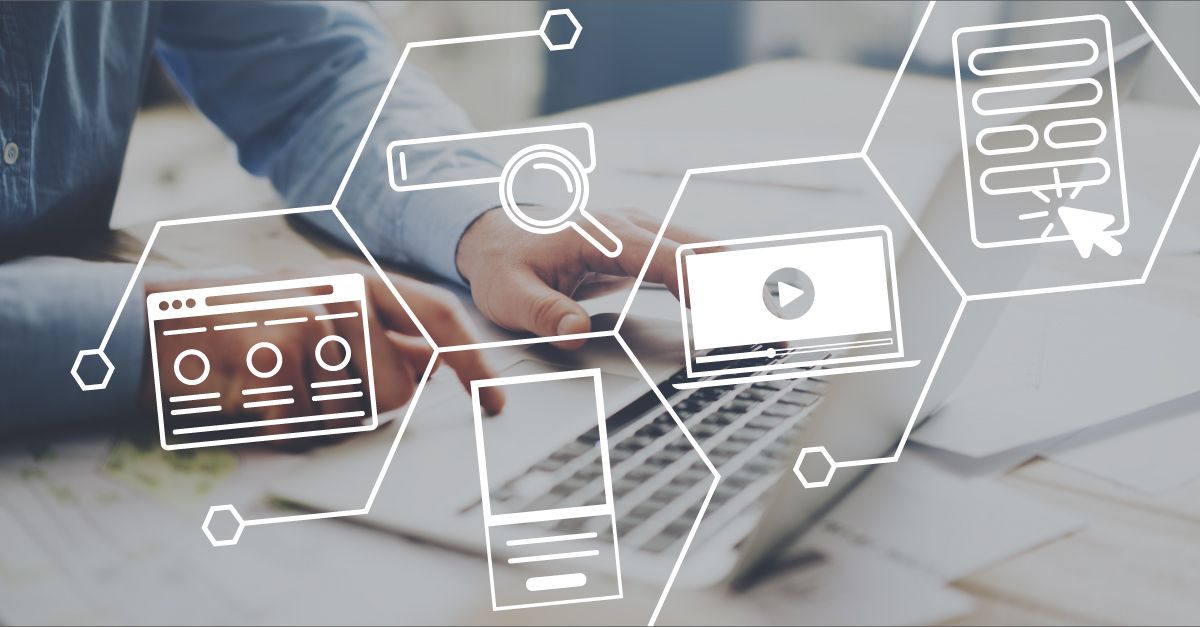
Marketers from all industries agree that a cohesive customer journey across all touch points and channels is essential. The classic customer journey map, however, is no longer applicable in our ever-evolving digital environment. Why? Because the consumer journey is no longer a straight line. Today’s customer journey is much more complex than ever before.
Non-linear journeys are the new normal
Today’s modern buyers are in control. Due to the plethora of information available on the internet and the ability to connect with nearly everyone in the world, customers are no longer following a linear customer journey path with a clear start, center and end.
This updated buying process makes people go back and forth between ads, forums, social media sites, emails, blogs, etc. because today’s customers are never on a predetermined path – they are strictly unpredictable. This is a good thing, however, as brands that try to understand and harness the customer journey by trying to control the process, run the risk of catching their customers and losing them.
Every customer is different and has their own set of needs, wants, preferences and behavioural patterns. Brands need to see customers as people and appreciate that each relationship will be different. In the modern age, the journey now has constant motion, with the course firmly in the customers’ hands. By making this change, a brand can start to make meaningful relationships and become more relevant in the modern, multi-channel world.
Embrace the massive opportunities in omnichannel marketing
Being multi-chain means expanding your customer service efforts across several platforms, which can be a daunting task. But think of this as an opportunity for brands to emerge as innovators and customer service leaders in their industries, following the customer journey to buy and adapt your product or service messages for maximum commitment and impact. The availability and versatility of a brand can often say more about the brand than the products or services it offers.

The Customer Has Taken the Wheel in the Buyer’s Journey
Brands who previously were able to define a customer journey, maybe even map it out on their websites in a linear fashion, now face a new reality. They no longer possess the means to dictate how a customer interacts with them. In today’s market, the customer has the reins and brands are simply along for the ride. To show you what we mean, here are a few examples:
- An auto dealer client added online video to their digital marketing mix with Genius Monkey and saw that the number of touch points needed to obtain a conversion reduced by about 10%.
- A state college that added OTT into the mix saw a reduction in the amount of time it took their average user to convert.
- An e-commerce client that wanted to experiment with native ads saw a 15% increase in total sales.
What does this mean? It means every business is different, every client is different, so you should always be evolving and experimenting with what your audience engages with best. Try different mediums, try different campaign types, creative types, budget allocations, targeting options etc. Just. stay. changing.
Learn to Evolve Customer Interactions
Customers know that if a brand doesn’t engage with them on their terms and when and where they want, another brand will. Brands are all on a level playing field, customers won’t discriminate between those that offer Twitter as a means of customer service and those that only use it as a ‘broadcast’ platform.
So how do you build a multi-channel strategy when customer interaction could span departments and multiple channels, with the customer stopping and starting whenever they wish?
- Design a good experience – A good experience is important and it’s necessary. Change is here and needs to be accepted. Being able to attribute cost to specific channels is becoming an archaic way of thinking and can lead to poor decision making and resources being allocated inefficiently. Marketers need to think big picture and long term if they wish to to truly bring in (and retain) ideal customers.
- Choose the right partner(s) – A large number of digital marketing vendors, or even some of the so-called programmatic vendors out there claim to be diverse in their media buying tactics, but are really only white labeling or using on DSP. Using one DSP is not an agnostic approach that is going to allow you to reach your audience on different mediums, at different times. Thus, you need to be careful in finding a partner like Genius Monkey that truly brings in all available impressions on all devices through many different DSPs, SSPs, and private deals so that you can really be non-linear in your marketing approach.
The traditional paradigm has shifted and is continuously evolving. The pressure exerted from omni-channel advancements is leaving many brands behind. While many argue that technological advancements are driving this change, it’s a lot more than the fact we have hand held internet access at all times. Multi-channel is just the label given to the solution of meeting modern customer needs. Choosing to take this approach means putting customer-centric thinking at the heart of each channel’s strategy.
Customer-centric journeys pave a path
The traditional customer journey is slowly dying out. To keep up with your competitors, you need to recognize the changes in the digital marketing world and the importance of non-linear customer journeys. Most importantly, do not forget that it is a never-ending and continuous process. Your relationship with the customer doesn’t end once they’ve converted. If you’ve marketed wisely, that’s just the beginning of a long and fruitful customer journey that can carry on endlessly as long as your brand continues to evolve in order to meet the consumer needs.
Interested in learning more about how Genius Monkey can boost your conversion rates today?
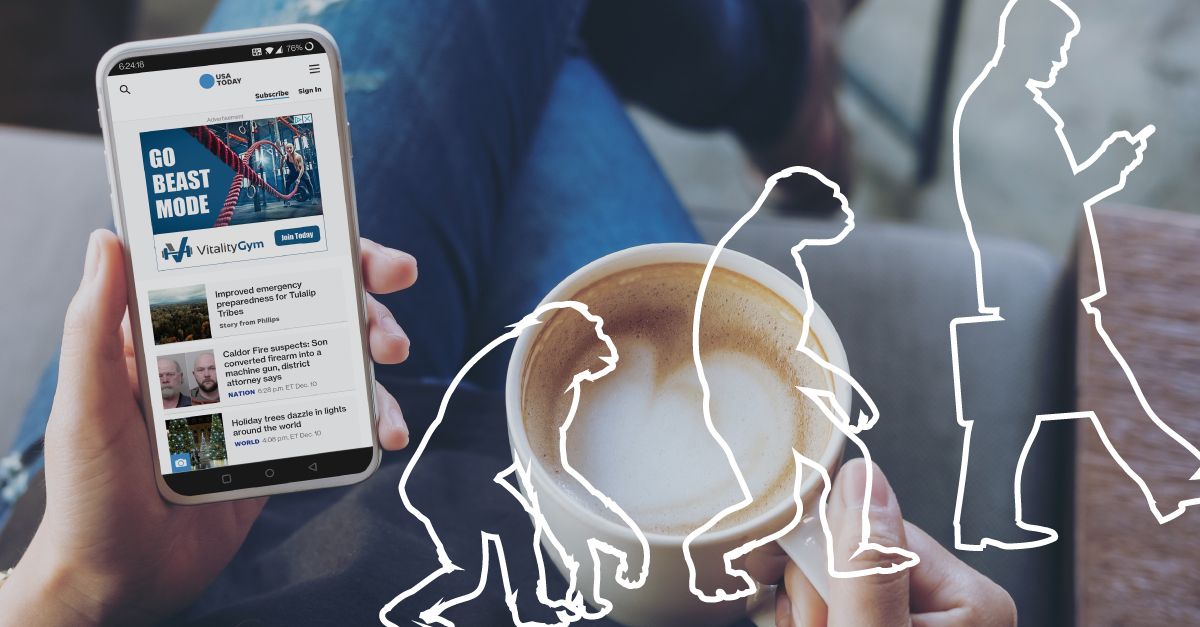

Canada's Leading SEO, Social and SEM Digital Shop
We use insights to drive business results, non-linear customer journeys and how to implement them.
Podcast: Play in new window | Download
Subscribe Today RSS
What is a non-linear customer journey, and how do you implement one into your marketing strategy?
A customer journey map is a great tool and a visual way to represent a somewhat complicated process - the path each customer takes as they interact with your company.
Understanding that journey is the first step to fixing roadblocks or capitalizing on advantages.

Check out the video or podcast above. 👆 Subscribe to our weekly live stream on Facebook, or take it on the go with a podcast on your chosen platform. Keep up-to-date on news, trends, and tips in digital marketing and join in on the conversation.
What's Working?
How do we provide customers and prospects what they need/want at any given time on a personalized level?
Customer Journey Mapping.
Creating a non-linear customer journey map helps visualize the interconnectedness of modern cross-channel customer experiences.
Businesses that use customer journey mapping to manage buyer and customer journeys average a 79% increase in cross-sell and upsell revenue.
The ultimate idea behind customer journey mapping is to understand our customers better.
The task of merely tracking what actions your customers take is brutal, and to put them into a linear journey is nearly impossible.
And that's why we're talking about the non-linear customer journey!
Let's get to it.
Why Do You Need a Non-Linear Customer Journey?
Back in the day, we looked at the customer journey in a much more linear way. It looked like this:
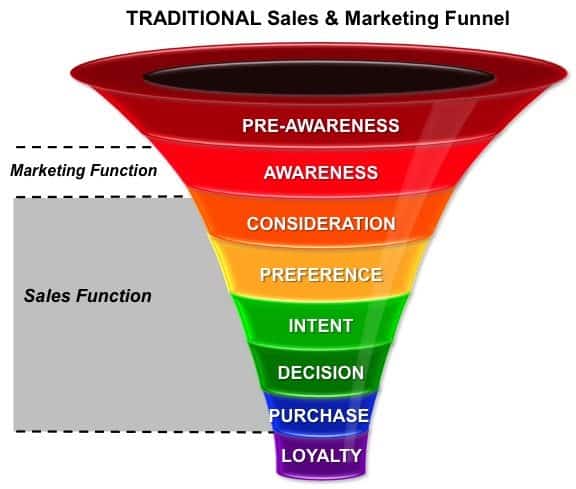
Image of customer journey funnel, each section is coloured and goes from wide to narrow.
Elements of this funnel are still intact in today’s non-linear customer journey. Even the number of touchpoints has dramatically increased, and the order in which things happen can differ from one customer to another.
The new path to purchase is much more complicated than the old linear way.
Customer touchpoints can now include a wide variety of channels, such as:
- Online Ads & Promoted Social
- Offline Ads / Content
- Social Media Networks
- Recommendations
- Website & Content
Simply put, the customer journey does not happen in a linear path anymore. The many touchpoints available to customers creates divergent paths that break away from the traditional linear funnel.
Now, a non-linear customer journey looks more like this:
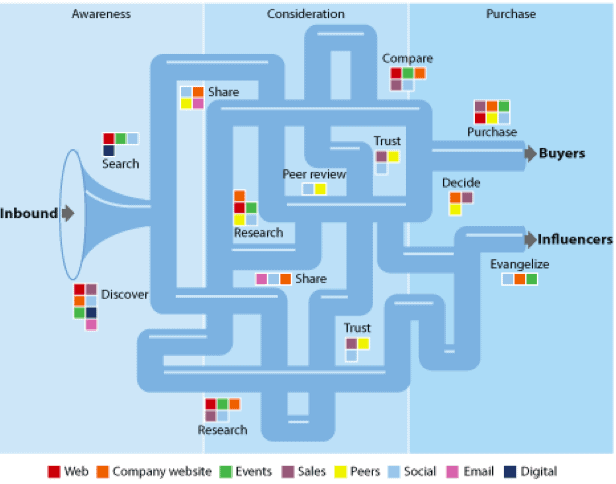
Image of a complex non-linear customer journey with many touchpoints, from start to purchase decision.
Now, let's look at the different types of non-linear customer journey maps you can use.
3 Core Approaches to a Non-Linear Customer Journey
There are many ways you can create a non-linear customer journey map, whether it's a complex maze of pathways or a simple chart.
We'll be taking a look at 3 types of mapping you can use, depending on your situation.
- Empathy Mapping
- Experience Mapping
- Customer Journey Mapping
Whatever model you choose, remember the "5 W's": Who, What, Where, When, and Why.
Let's use a case study example to walk through.
Paul Sanders is a marketer and wants to learn how to develop an integrated marketing strategy. Experience has shown that many digital marketing sites were not as helpful as had hoped. He finds Marketer Knows during his research and goes through the process of signing up.
- Marketer Knows is a community of digital marketers, marketing managers, business people, and entrepreneurs.
- A free-to-join community that individuals can join to learn about Digital Marketing.
- Helps you achieve your marketing goals by mastering digital marketing with roadmaps , courses , guides , and more .
Now, before we get into the mapping, let's figure out who Paul Sanders is by developing a customer profile.
What is the Customer Profile?
A customer profile lists pain points, interests, buying patterns, and demographic characteristics of a company's customers.
You can't be all things to everyone, but you can create a customer profile to learn more about your ideal customer, who they are, and what they do.
Building a customer profile can help you run better marketing campaigns that increase your profits.
With all that useful information, you can decide which strategy to implement and which ones to avoid.
The customer profile is NOT the persona, but it will eventually integrate into the process.
You can read more about personas in our blog here: Research. Strategize. Execute. 3 Pillars of Building Your Brand Online.
Let's take a look at 3 different types of customer profiles:
Example #1 – Scorecard
This customer profile uses a scoring system to determine if a customer is a right fit for this course.
It assesses the prospect on five different criteria and gives them a score for each ranging from zero to two.
If the total score meets a preset benchmark, your company can consider targeting this individual.
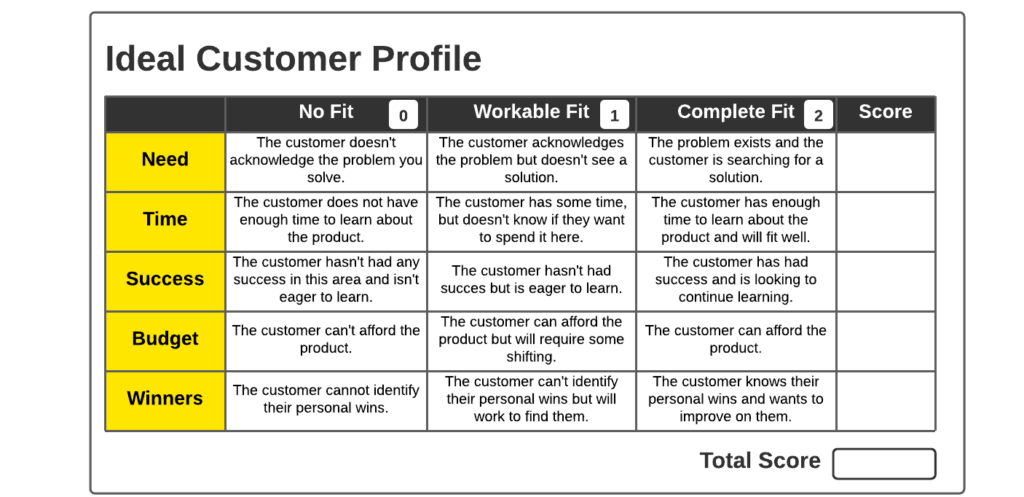
Customer profile scorecard showing how well an ideal customer will fit.
Example #2 – Profession
Each customer type is broken down by demographics, core values, and preferred communication channels.
It includes a summary describing how the marketing team should advertise to these individuals.
You can work alongside your team to turnout effective campaigns that resonate with each segment of its customer base.

Customer profile segmentation chart showing different customer types, each with summary details.
Example #3 – Persona
Creating buyer personas will help you determine your marketing strategy. It showcases who the buyers are, their current obstacles, and the goals they are trying to accomplish.
It creates a roadmap for success by diving deeper into customer personalities helping you understand the individual, and listing all the essential information we need to know about this customer type.
This includes background data, demographics, and behavioural identifiers.
Think of it as a living document that you can continue to refine, using real data from your actual customers, to develop your personas' accuracy further.

This is an example of a customer persona, detailing goals, frustrations, personality type, and other basic information.
Empathy Mapping - Why Is This Effective? What Is It?
Empathy maps provide a glance into who a user is as a whole, serving as a collaborative visualization used to explain what we know about a particular user.
Empathy mapping also:
- Externalizes knowledge about users.
- Creates a shared understanding of a customer’s needs.
- Aids in decision making.
Traditional empathy maps are split into 4 quadrants (Says, Thinks, Does, and Feels), with the user or persona in the middle.

This is an example of the structure of a traditional Customer Empathy Map with 4 squares and a headshot in the center.
SAYS : What the customer says out loud—verbatim and direct quotes from research.
- Example: “ I want something reliable. ”
THINKS : What the customer is thinking throughout the experience.
- Example: “ This is really hard to understand. ”
DOES : The actions that the customer takes. What physical actions are the customers taking?
- Example: Shops around to compare prices.
FEELS : The customer’s emotional state. What are they worried or excited about?
- Example: Confused - Too much misleading info.
Empathy mapping is all about understanding the customer on a deeper emotional and relatable level.
The KPIs you’d want to measure for this includes:
Life Cycle – Conversion Rate, Up-Selling Rate, Renewal Rate, Customer Lifetime Value.
Numbers & Rates – Bounce Rate, Click-Through Rate, Customer Complaints, Direct Traffic.
Satisfaction – Customer satisfaction Index, Intention to Repurchase, Satisfaction with Interaction.
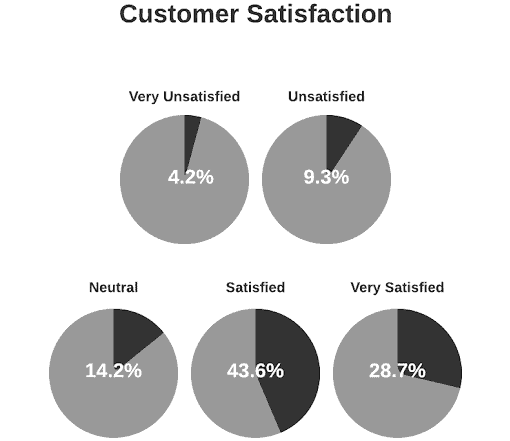
Customer satisfaction graph with 5 circles showing varying degrees of satisfaction through percentages.
Examples of Empathy Mapping
Let's take a look at a couple examples of what empathy mapping looks like:

Empathy mapping example with 4 squares-says, thinks, does, feels- with headshot in the center.

Experience Mapping - Why Is This Effective? What Is It?
An experience map focuses on a general, high-level understanding of human behaviour to achieve a particular goal.
An experience map is a product and service agnostic.
Experience maps are typically used before you even start designing a product.
This helps you identify opportunities in your design to smooth out and solve painful experiences.
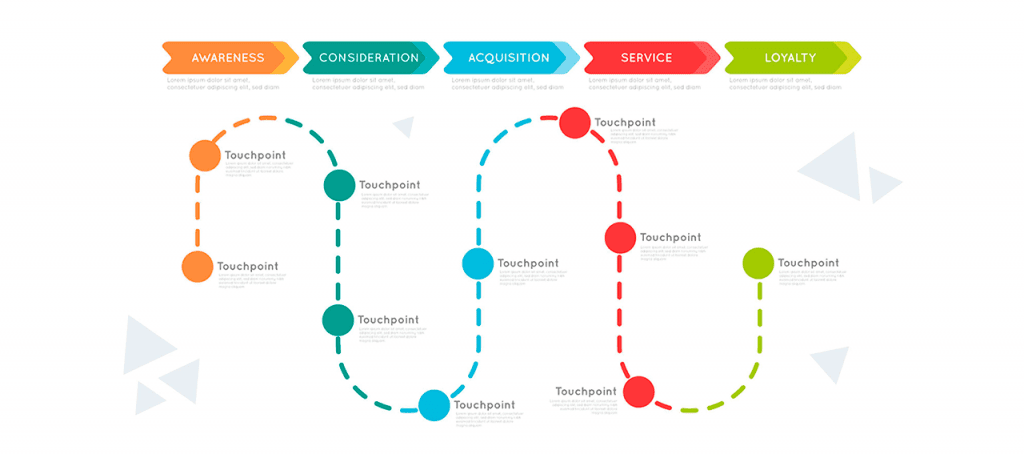
The key elements of Customer Experience Mapping.
Why use Experience Mapping?
To understand general human behaviour.
To create a baseline understanding of an experience that is product/service agnostic.
When to use it?
Before a customer journey map to gain an understanding of general human behaviour.
When converging multiple experiences (tool and specific user agnostic) into one visualization.
Now let's take a look at an example:
Paul Sanders wants to learn how to develop an integrated marketing strategy.
Experience has shown that many digital marketing sites were not as helpful as had hoped.
He finds Marketer Knows during his research and goes through the process of signing up.
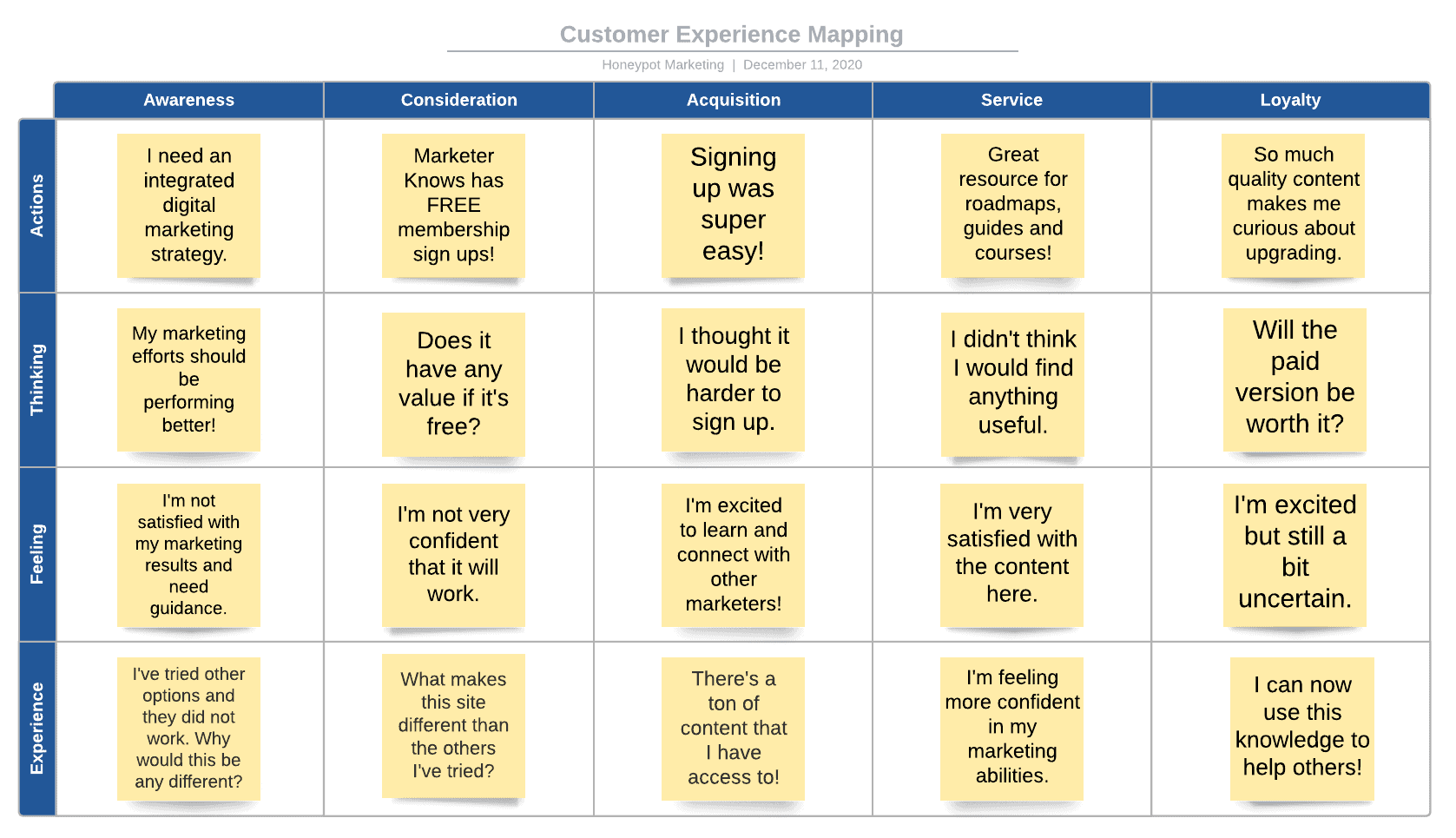
An example of a customer experience map showing their experience during the stages of their journey.
Here are 5 great reasons to use an experience map:
- It helps you see the big picture of your customer’s journey to understand their needs and pain points further.
- It makes collaboration between designers, developers, and managers easier, effective, and focused.
- It facilitates desired outcomes by pinpointing and minimizing negative customer experiences.
- Identifies the reasons for churn, addressing them, and creating the opportunity to bring users on board again.
Some of the most common KPIs that are used to measure performance include:
- Net Promoter Score (NPS)
- Retention Rate
- Customer Lifetime Value (CLV)
- Customer Acquisition Cost (CAC)
- Customer Effort Score (CES)
- Customer Satisfaction (CSAT)
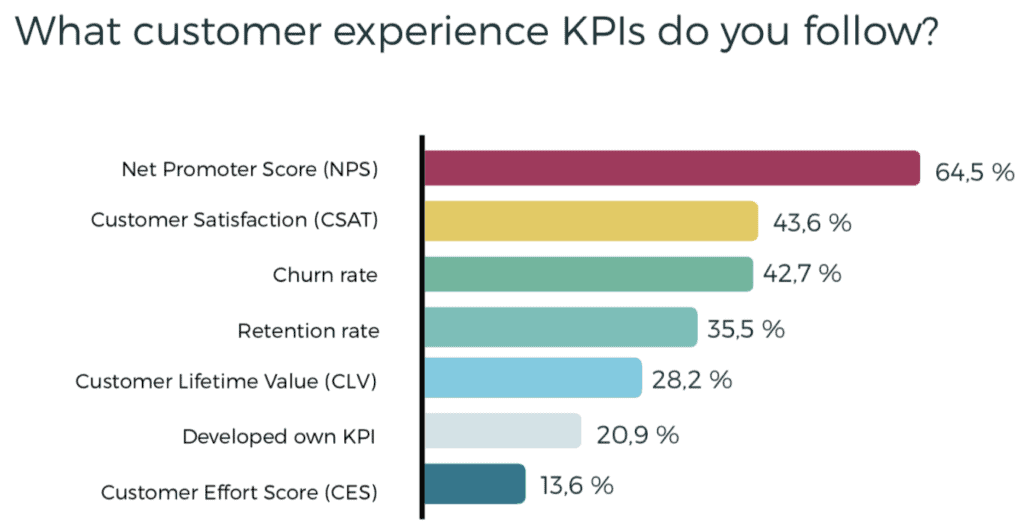
a graph showing the most common customer experience KPIs.
Customer Journey Mapping - Why Is This Effective? What Is It?
Customer journey mapping a visual story of your customers' interactions, or touchpoints , determining the stages where customers become aware of your brand.
At each stage of the journey, it depicts what customers are thinking, doing, and experiencing.
Touchpoint aligning is achieved by comparing how customers interact with your brand today versus the ideal customer journey - to find areas of opportunity.
Why use it:
- To create a strategic approach on how to optimize the customer experience based on how they feel.
- Allows you to adapt more personalized and specific marketing tactics as you gain more insight into a customer's pain points and feelings throughout their journey.
- Crucial for optimizing the customer experience.
When to use it:
- Ongoing - it should be treated as a living document that is updated periodically.
- When your customers make the first contact with your business. Now let's take a look at an example:

Example of a customer journey map showing the many touchpoints and paths along the journey.
As you can see from the example above, this method:
- Takes into consideration the non-linear nature of a customer journey.
- Tracks how their experiences make them feel , the touchpoints involved, and actionable steps to improve their experience.
- It does not end with a purchase ; it includes a follow-up and can be updated past the purchase point.
The KPIs you'd want to measure include:
- Engagement with calls to action (CTAs)
Other KPIs that can be used to optimize the journey
- Uptime, page speed, and mobile optimization
- Organic keyword traffic to your support site
- Abandon rate and bounce rate
And That's A Wrap!
Customer Journey Mapping can be a beneficial tool, helping provide a deeper understanding of the customer and their purchasing journey.
This, in turn, will improve your marketing efforts by providing insights into your customer's needs, pain points, and interests, allowing you to communicate with them more effectively.
Just remember, if ever you find yourself lost, stop, and check the map.
We hope you were able to find some value here! Now take that knowledge and go forth into the world and share it with everyone!
Here are some more resources for you to check out at your leisure. If you have any feedback or questions, drop us a comment below!
Thanks for reading!
Stay safe. Stay healthy.
Customer Journey Mapping - Customer journey mapping is a great tool that sits at the intersection of user experience design, customer experience management, and design thinking. It is also useful for mapping out the way that a company's various marketing touchpoints connect.
Attribution is More Important Than Ever in Today's Non-Linear Customer Journey - You will use this information to strengthen the experience of each future customer by providing a better, more refined way to develop a relationship with your brand in a way that is optimal for them.
15 Powerful Customer Journey Maps - To guide your journey map efforts, here are 15 great examples!
Tags: Digital Marketing , Digital Marketing Strategy , Honeypot Marketing , How To , Marketing , Marketing strategy , marketing tips , Social media marketing
- More Networks

- Privacy Overview
- Strictly Necessary Cookies
This website uses cookies so that we can provide you with the best user experience possible. Cookie information is stored in your browser and performs functions such as recognising you when you return to our website and helping our team to understand which sections of the website you find most interesting and useful.
Strictly Necessary Cookie should be enabled at all times so that we can save your preferences for cookie settings.
If you disable this cookie, we will not be able to save your preferences. This means that every time you visit this website you will need to enable or disable cookies again.
Popular Content
Attract and retain customers by delivering amazing experiences with North America’s leading platform for cable and broadband billing.
CSG Ascendon
Sell any digital service direct to customers and let them build bundles, pay and self-serve on their terms.
CSG Encompass
Expand your portfolio beyond connectivity services to B2B and B2B2X, and generate new revenue streams.
Accept online and mobile payments, ACH, contactless and other digital payment options.
CSG Xponent
Deliver effortless customer experiences anytime, anywhere on CSG’s leading customer engagement platform.
Configure, Price, Quote
Customer communications & operations, customer experience, network solutions, payments & merchant services, revenue management & monetization, wholesale & partner management, view all products.
Introducing CSG Xponent Ignite. Customer engagement tailored to your industry, tied to your business goals and prebuilt to quickly go live.
Telecommunications
Monetize and optimize any digital or partner service with innovative solutions for telcos.
Financial Services
Be there for customers at every stage of their financial journeys.
Modernize the essential interactions with your citizens.
Manage notifications, customer journeys and payments for providers, payers or device manufacturers.
Unified customer engagement, journey and communications solutions for retail.
Tolling and Smart Mobility
Improve revenue collection by turning anonymous drivers into your customers.
- Latest News

What Is a Customer Journey?
Table of Contents
Life is a journey. While this common saying is true, it’s oversimplified. Life is made up of many journeys, and each person has different destinations, itineraries and experiences along the way. Customer journeys are similarly varied and unique. Just as personal journeys shape individuals, customer journeys define the customer experience (CX).
Businesses must improve customer journeys to enhance CX and increase retention. Yet many business leaders don’t understand this popular buzzword. According to a Forrester survey of 484 global CX leaders, 40% indicated that lack of understanding or appreciation for customer journeys is a major challenge to delivering a successful CX.
But as the popular Chinese proverb goes, “A journey of a thousand miles begins with one step.” In the journey toward better CX , that important first step is to recognize and appreciate the underlying customer journey across interactions.
A customer journey is a series of interactions that a customer has with a brand for any particular task or decision . The customer decides what actions to take at each step in the process, but the business has an opportunity to guide those decisions and behaviors toward the desired outcome.
Customer journeys occur during all six stages of the customer experience lifecycle:
- Discover (research products and services)
- Buy (purchase goods or services, apply for a bank account)
- Onboard (receive products, activate accounts or services)
- Use (change communication preferences, receive fraud alerts)
- Support (pay bills, receive outage notifications, return a purchased item)
- Grow (receive targeted offers, renew contract)
The above view captures all the possible interactions a business can have with a customer; yet, many brands focus primarily on the purchase journey. Interactions after the sales transaction are equally—if not more—important for customer experience and retention.
A customer journey includes various touchpoints and channels because customers interact with brands via many channels : website, email, text messages, mobile app, social media, voice (call center) and brick-and-mortar stores. Someone on a bill pay journey may open an email or text message on their phone (“Your payment is due soon”), click on a link to review the bill, and then call customer service after spotting an error. A few days later, the customer uses their laptop to pay the bill online. Businesses must make it simple for customers to complete each step without them having to start over when they switch channels, devices or even moments in time.
Related Blog: Great CX Requires More Than a CDP
A Customer Journey Is NOT Linear or One-Size-Fits-All
While we always have an “ideal” journey in mind, in life and in business, it almost never unfolds that way. Customers don’t progress directly from point A to point B—they bounce around, backwards and between, the steps outlined in a journey map. Often, purchase journeys are not as straightforward as seeing an ad, going to the store and purchasing the product. Customers may take many, varied steps (that often loop back on each other) between awareness/discovery and purchase. Someone may view social media ads, place an item in the shopping cart, browse other companies’ websites, abandon the cart, complete the purchase a few days later, call to check on delivery status, and then return the item when it doesn’t fit.
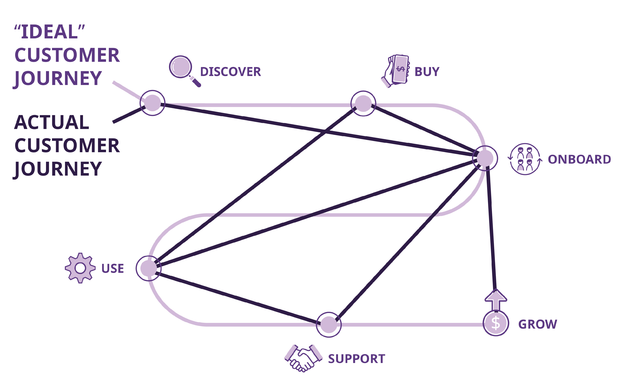
Customers can be on multiple journeys at the same time. Almost half ( 44% ) of global CX leaders surveyed, indicated that customers are engaging in multiple journeys and expect their company to be aware of and sensitive to all of them. For example, a recent grad may have just purchased another credit card with travel-related benefits. If they are still ramping up with their new card, it’s not the right time to ask them to get the latest ultra platinum credit card with a $30,000 spending limit.
How can you send the right messages at the right time, guiding customers through the next best action or experience?
Journey Orchestration Makes Any Customer Experience an Ideal One
A static linear journey will only go so far to satisfy customers and build loyalty. With a journey-centric approach, customers control their interactions and journeys with the brand from acquisition and onboarding to support and retention. Thus any journey must be orchestrated in real time to be successful.
Journey orchestration refers to using real-time customer data to analyze current behavior, predict future behavior and send the right messages at the right time via the customer’s preferred communication channel. Journey orchestration allows you to guide customers’ behavior, adjusting the experience in real time regardless of channel, time or place.
Related Report: State of Customer Experience 2023 Report
What do successfully orchestrated journeys look like?
Telco/communication service providers : promo roll off journey.
As customers approach their contract renewal date, determine and send the best upgrade offer (based on each customer’s usage history) via their preferred communication channel. Customers who don’t engage with the targeted offer receive follow-up message. The save/retention team contacts customers who don’t respond to the upgrade offer.
Financial Services : Bill pay journey
Detects that a customer has been issued a bill and the due date is approaching. Sends one or more notifications via the preferred channel, reminding the customer to pay on time to avoid late fees. If the customer doesn’t pay on time, the system triggers a collections journey.
Retail : Abandoned cart journey
Identify if products have been abandoned in a shopping cart. The system determines and sends the right message (perhaps a discount offer) to nudge the customer to complete the purchase. Then notify the customer after the order has been placed, indicating when the product will be delivered or ready for pick-up.
Healthcare : Appointment management journey
Proactively remind the patient (via voice, email or text) that it’s time to schedule the annual checkup (via phone or patient portal). After the patient schedules the appointment, follow up accordingly with appointment reminders via the patient’s preferred communication channel (voice, email or text).
Take the First Step with CSG Xponent Ignite
CSG Xponent Ignite , our customer experience solution, includes pre-built customer journeys for four industries: telecommunications, financial services, retail and healthcare. The foundation of Xponent Ignite is CSG Xponent, our industry-leading, award winning platform that includes a feature-rich and fully embedded customer data management/platform layer (CDP), customer journey orchestration and journey analytics to analyze customer behavior , sentiment and preferences to deliver the right personalized messages at the right time.
It’s time to make every customer journey an ideal experience. Contact us today .

Jordan Alcon
4 Misconceptions About the Customer Journey
A successful product can only work if people actually buy it. but too many product leaders focus on the product itself and not on what makes it sell. hint: it’s not features. as product leaders you cannot ignore the full customer journey to make sure it makes sense. here are four things you might be missing..
Product Coalition
W hat’s the difference between theory and practice? In theory, there is no difference.
I’m sure you know this quote and see it a lot in product management. At Infinify , we made it a point to connect the two. Give you the theory but deal with reality and the real challenges that come with it in everything we do — our courses, the CPO Bootcamp , strategic consulting , and this blog .
But the difference between theory and practice isn’t limited to product management theory — mostly processes and methodologies. It appears in your product itself.
In theory, your customers would use it the way you intended them to. In practice, they often don’t.
In theory, your customers see the value of your product just the way you do. In practice, it’s often different.
In theory, your customers don’t get it! In practice, it’s often you that don’t get it.
Last week I wrote about the difference between a theoretical customer journey and what a real customer journey looks like. I also wrote about why the customer journey is so important and is part of your responsibility as a product leader, even if you can’t impact it directly as you do with features. Today I want to dive deeper into the principles that cause this difference. Here are four things to consider when you define your customer journey.
It’s in Their Heads, Not Their Actions
As product people we often tend to look at the tangible part of the product — the UX and what people can actually work with. It’s an important part of our work, and an important part of the customer journey — but only in the sense that that’s where the outcome is.
But most of the customer journey doesn’t happen on your product. It happens in their heads. It’s in their thoughts and feelings until they understand what the next step is and decide to take it (or not).
If you only define the customer journey through people’s actions, you are missing out on what drives the journey. You must understand at a very detailed level what people are thinking and feeling after each and every step, in order to see if it makes sense. You must be crystal clear on the value that people expect to get out of your product before you translate it to features and make sure you actually deliver this value.
When I work with companies on their customer journeys and we add that level of detail, suddenly they fully understand why their (potential) customers didn’t take the actions they expected them to take. It’s usually not because the button isn’t visible enough, it’s because the next step isn’t logical based on where the customer is in terms of their knowledge or motivation to use the product.
It’s About Business, Not About Usage
As I wrote in my disambiguation guide for product-led growth , the product is a means to an end. It’s a business tool and not just software. As such, it’s important to treat the customer journey as a business journey and not as a product journey.
How do they hear about your product? What do they think it is going to give them? Do they see it when they try it out? Is it consistent all along the way? What would make them buy — any product in your category, and specifically yours? How are decisions made? Who do they need to convince, and why would they do that? Where would they get the budget from? What do they need to go through in order to secure it?
There are all questions related to the business side of the product. I too often see product leaders who focus their attention on the tangible product but neglect to see the business side of it. It goes with the notion that this is someone else’s job. Unfortunately, that’s not how it usually works.
If you have mediocre marketing and sales people, it wouldn’t work. If you have good marketing and sales people, they will be able to sell the product to some extent based on their network and talent. If you have great marketing and sales people, they will come to you and ask deep questions about the customer profile and the value that you are expecting to deliver to these customers. They will then build their entire strategy according to your answers so that all the departments work together to generate success. If you work in the product-led growth model, this is even more important since you no longer have people in the loop to cover for the holes in your story. I cover that deeply in our Unboxing PLG course .
But the bottom line is that as a product leader, you must think of the business side of your product no matter what. If for nothing else, do it in order to make sure you are building the right product. A great product that cannot be sold is not a great product anymore.
It’s Not Linear
When we focus on the customer journey, especially on the part that involves the actual product, that’s all we see. But it’s important to remember that the customer journey happens in a broader context — in the real world . In this world there are interruptions, so people might start and forget about it. In the real world, decisions are made not when you want them to be made, but when people are ready to decide. Sometimes, many times, they need to sleep on it. They would want other people’s opinions. All of these happen outside of the product, and a logical next step could take a long time to complete.
When you read this, you might be thinking that that’s why you are working so hard on improving your onboarding and removing friction. You’re right, but there’s more to it. The main takeaway here is that you need to work with how people do things, and accept and embrace the non-tangible part of the customer journey, in order to make it work. Not everything can be rushed through a better experience. If you understand how they think and what needs to happen in their world you will be much better prepared to actually help them take the next step that you want them to take — when they are ready for it.
They Don’t Work for You
So often I hear product leaders describing their customer journey as if all the customer wants is to complete it. They define a customer journey that makes perfect sense if all you have in mind is that you want this to succeed. But that’s rarely the case with real customers. They have their concerns, they haven’t made up their mind yet, and they have other things to do and worry about.
A good customer journey should work even when people don’t try to succeed. It needs to connect to their fundamental needs and desires so that they feel it serves them and not vice versa.
Defining a good customer journey requires that you fully understand what value people are expecting to get from your product and why it’s important for them. It’s much more than a UX exercise, it ties directly into your product strategy. In product-led growth, it is even more important, since the product is your actual marketing and sales tool. One simply cannot succeed with PLG without defining a great product strategy to lead the way. Our Unboxing PLG online course provides you with a step-by-step guide on how to navigate your PLG journey to success.
With our help or on your own, make sure you define a customer journey that can work in practice and not only in theory. Defining that journey is a journey in and of itself — it would take you multiple iterations to nail it. Make it your responsibility if (as it happens in most cases) no one told you explicitly that you own it. You shouldn’t treat this as a nice to have. Your product — and you — simply cannot succeed without it.
Our free e-book “ Speed-Up the Journey to Product-Market Fit ” — an executive’s guide to strategic product management is waiting for you at www.infinify.com/ebook
Originally published at https://infinify.com on June 28, 2023.

Written by Noa Ganot
Helping product executives and their companies grow. Formerly VP Product @Twiggle, Head of Product @eBay Israel and Senior Product @Imperva. www.infinify.com
More from Noa Ganot and Product Coalition

Why Your OKRs Need a Hierarchy
Okrs are an extremely powerful tool, but among the many mistakes companies make, a flat list of okrs is a very common one….

Clayton Tarics
Strategy Storytelling: The Product Narrative Canvas
Let’s talk about how to elevate your product strategy with an outcome-driven storytelling model..

Michael H. Goitein
How Listening to the Right Customers Can Reduce Wasted Effort and Increase Revenue
Prioritize user needs, not your features.

The Right Principles of Agile
Many teams misuse agile without reaping its full benefits, leading to misconceptions and bans. here’s how to truly benefit everyone., recommended from medium.

Kavir Kaycee
The Discourse Co
ChatGPT prompts for product managers
How to use chatgpt as a product manager’s assistant.

Paweł Huryn
How to Design a Value Proposition Customers Can’t Resist?
What is a value proposition best practices. value proposition template. canva value proposition example. positioning vs. messaging vs….
Good Product Thinking
Growth Marketing
A Guide to OKRs – Objectives and Key Results
Product Design and Product Designer: demistifying buzzwords
The meaning behind the titles.
Crack FAANG
PM Interview: Favorite Product
The question “what’s your favorite product” in pm interviews is a staple. it’s a straightforward yet insightful query that serves as an….

Roman Pichler
Everything You Need to Know about Product Portfolio Strategy
Products often don’t exist in isolation. instead, they are part of a product portfolio. think of word, excel, and powerpoint, which belong….
B2B Product Managers: What value are YOU adding?
There are lots of things that product managers can and do work on, but there are only a very small number of things that can make product….
Text to speech
- SUGGESTED TOPICS
- The Magazine
- Newsletters
- Managing Yourself
- Managing Teams
- Work-life Balance
- The Big Idea
- Data & Visuals
- Reading Lists
- Case Selections
- HBR Learning
- Topic Feeds
- Account Settings
- Email Preferences
Designing Customer Journeys for the Post-Pandemic World
- Gene Cornfield

Three factors to consider.
While using customer journeys to guide what teams build and how they operate is common practice, small differences in approach produce vastly different results. But today, as we enter a new stage of profound change, those differences will be more important than ever to business performance. The author offers three simple but critical factors that will determine whether your post-pandemic customer journeys will help amplify or impede business growth. First, be customer-centric, not company-centric. Second, create flexible journeys based on need-points, not touchpoints. Third, measure (and optimize) customer journeys and experiences. Small and midsize businesses have a window of advantage here. While larger companies might have greater resources and reach and some have recognized the need to pivot their customer journeys, experiences, and operations for new realities, for many, forward progress will be mitigated by operational, organizational, and cultural inertia.
As vaccinated millions step tentatively back into an in-person economy poised for growth , the relationships they had with companies they preferred before will resume — but on a trial basis. Spending loyalties will be cemented (or potentially lost to others) based on how well companies understand customers’ new priorities that were forged by the degree of uncertainty, fear, strife, or loss each individual experienced. These considerations will influence not only what customers choose but also how they go about choosing. Your customer journeys must change to reflect your customers’ new preferences and behaviors.
While using customer journeys to guide what teams build and how they operate is common practice, small differences in approach produce vastly different results. But today, as we enter a new stage of profound change, those differences will be more important than ever to business performance. Companies that have adopted different approaches to customer journey and experience practices have seen more than six times greater growth in year-on-year profitability.
Regardless of one’s industry, whether B2C or B2B, the following three simple but critical factors will determine whether your post-pandemic customer journeys will help amplify or impede business growth.
Customer-Centric, Not Company-Centric
Customers happily serve as the engine of business outcomes when doing so is a byproduct of achieving their own intended outcomes. Every time a customer achieves their purpose, the company that enabled them to do so receives revenue or some other value (loyalty, advocacy, etc.).
Opportunities for Midsize Businesses in 2021
But the vast majority of customer journeys I see focus on company outcomes. They guide marketing or sales or service teams, perhaps inadvertently, to manipulate customers toward a business outcome. This practice is so engrained that we have a name for it: The funnel.
The least customer-centric companies often have a single customer journey that is essentially the vertical funnel turned on its side, like a livestock chute through which customers are prodded toward a fate of the company’s choosing. The corralling pens customers pass through — awareness, interest, evaluation, intent, purchase, loyalty — are all in the context of a product and what the company wants, not what customers want.
Many other companies have recognized that customers engage in multiple journeys over the lifetime of their relationship; however, those different journeys are typically aligned to and named for specific outcomes, such as acquisition, retention, or upsell. The question for these companies is: Which customer segments wake up with a burning desire to be acquired? Which think their lives would be so much better if only they could be retained or upsold? These journeys, too, are entirely company-centric. Customer-centric journeys start and end with the outcome customers are trying to achieve: Their intended purpose.
For example, the pandemic has spurred many people to relocate from cities to suburbs . Many are first-time homeowners, unsure what tools they might need for planned improvements or unplanned repairs. Some might want to build a treehouse with their kids but don’t yet have a specific model chosen or the plans, instructions, or tools to realize it. What new offerings, journeys, or experiences might manufacturers of power tools create to enable customers to achieve this purpose?
A traditional journey might start with ads or emails with images of a family building a treehouse that link to the company home page, and then expect the customer to discern what tools or other things they need. Without further guidance, customers will likely leave the company’s site (and the company-designed journey) for a search engine, which provides links to numerous articles, blogs, or competitor sites — any of which might better help the customer achieve their purpose and, as a result, prompt them to purchase elsewhere. The company-designed journey might include stalking customers around the web with retargeting ads. But not only is this practice being phased out , it squanders marketing spend by trying to bring customers back to a site that doesn’t address key needs in their journey.
A more customer-centric journey might start with the ads or emails described above, but link to a section of the company website organized by types of projects, from decks to sheds to treehouses. They might show multiple treehouse designs, filterable by size or the type of trees for which each is suitable. The detail page for each treehouse might show a video of the project from start to finish to build confidence in the customer and excitement among the family. All the tools and parts required might be listed, with options to buy them a la carte or as a full package. Each purchase might include assembly plans with illustrated instructions, and a mobile device–optimized step-by-step version, with guidance on what age child can handle each task so all family members can participate safely. Options for contactless delivery or curbside pickup at a local retail partner could be presented. The company might include an offer from a partner like DoorDash or Grubhub for lunch/refreshment delivery, to address that part of the journey.
Companies can better drive growth by creating journeys that align with their customers’ purposes, then develop and operate experiences that enable customers to achieve them. This isn’t to say companies shouldn’t be trying to influence customer decisions along the way. Influence can be more effective when journeys and experiences are customer-centric, designed not as a path to purchase, but as a path to purpose .
The tool company above influences purchases by designing an offer, journey, and experience that addresses customer purpose. They could influence future purchases by triggering an email a few weeks later asking customers how the treehouse project went or if they need help. Doing so demonstrates commitment to the customer’s purpose, which can influence loyalty and future purchases. If the email also encourages customers to post finished treehouse photos on Instagram (which can also appear on the webpage for that treehouse), the company aligns with customers’ desire to share family accomplishments, which might influence others to buy.
This customer-centric, purpose-led approach is even more important for B2B companies. Longer buying cycles mean keeping prospects engaged in longer journeys with more interaction points. It’s also more challenging when decisions involve multiple people, each on their own journey, with varying purposes depending on their role. Marketing and sales teams can increase win rates by aligning individual journeys to each person’s purpose, while managing the group’s purposes collectively in a multi-buyer journey.
Flexible Journeys Based on Need-Points, Not Touchpoints
Customers have greater choice than ever before in terms of how and where they engage. And being forced in the last year to interact only via phone, websites, apps, chats, text, or social channels means customers are more comfortable with these methods than before.
This democratization of new interaction channels has made it more important that customer journeys not be rigidly tied to specific touchpoints. For example, a customer journey that portrays a linear series of interactions — customer sees offline ad, then goes to search engine, then is directed to landing page on website, then is retargeted on Facebook, then comes back to website and provides email address, after which an email to customer is triggered, etc. — is only useful as an example of what could happen if all the stars aligned — or if customers were willing to follow the script.
But customers don’t follow scripts. They follow impulses, urges, whims, and preferences, often in unplanned moments of opportunity. So it’s important that journeys are not aligned to specific touchpoints according to what the company wants to happen. Rather, the company should seek to understand the series of need-points customers traverse in order to make decisions that achieve whatever outcome they ultimately intend.
For example, a person whose purpose is to quit smoking might traverse a journey of need-points, from understanding the easiest way to quit, which method is best for them, how fast it will work, where they can buy it, how quickly they can get it, and (once received) how they use it. Each customer might choose from a variety of touchpoints at each moment of need, depending on their preferences or context at that moment.
It’s your job to be present with the content, expert, recommendation, answer, or product relevant to the customer need at that point, in any and all of the channels a customer might choose, including any operated by the company (website, app, chatbot, call center, salespeople, stores, branches, etc.) or by third parties (search engines, review sites, blogs, retail partners, etc.).
The company that successively addresses these needs most relevantly, clearly, and quickly at any potential touchpoint is likely to maintain engagement and influence throughout each customer’s journey until each achieves their ultimate purpose — and generates value for the business.
Measuring (and Optimizing) Customer Journeys and Experiences
Company outcomes depend on the number of customers who successfully achieve their intended purpose. The better a company measures and manages how well they’re enabling customers to progress across need-points, the stronger the resulting business outcomes.
Teams can measure the effectiveness of their customer journeys — and the experiences based on them — using Customer Performance Indicators (CPIs), which I’ve written about before . This method measures how well a company is performing for customers at each need-point. The better a company performs on outcomes important to customers (CPIs), the better it will perform on outcomes important to the company (KPIs). And because certain need-points in the journey will influence customer decisions more than others, companies should prioritize performing well on CPIs in these moments that matter .
You may find that some need-points are specific to certain customer segments. So, while revising journeys and experiences for your largest or most valuable customer segments is advisable, catering to the unique needs or preferences of other segments should be added over time. Do this by creating off-ramps and on-ramps to and from your main journeys, as a map would depict side roads merging onto a major thoroughfare.
For example, the simplified insurance journey from my previous article reflects three key need-points: Fast Quote, Best Price, and Payments That Fit My Budget. Some customers may need to understand the benefits of bundling home, auto, or other insurance policies before looking for a fast quote.
So another need-point (and CPI) for Understanding Bundling Benefits might be added with an on-ramp to the main journey. This helps marketers ensure they have relevant content for the new need-point (at all touchpoints), and designers can ensure a more relevant and seamless experience for more customers, which results in more customers won.
Looking Ahead
If your company has already adopted these practices, you’re well-positioned to thrive. Simply refine your customer journeys and experiences for how customer needs and values have evolved. For those still using company-centric, linear journeys rigidly tied to specific touchpoints or measuring only business outcomes, now is the time a change in approach will pay off the most.
Small and midsize businesses have a window of advantage here. While larger companies might have greater resources and reach and some have recognized the need to pivot their customer journeys, experiences, and operations for new realities, for many, forward progress will be mitigated by operational, organizational, and cultural inertia. So, until larger or slower players ultimately get there, opportunities abound for more nimble companies to better align with customers’ new purposes and forge new relationships that accelerate growth and strengthen loyalty by providing them with greater confidence in a still-uncertain world.
- Gene Cornfield is Global Lead for the High-Tech Industry at Accenture Interactive. He also leads Accenture’s global cross-industry Chief Marketing Officer peer group.
Partner Center
Sales CRM Terms
What is the Customer Journey? (Explained With Examples)
Oct 11, 2023

The customer journey is a concept that refers to the process that a customer goes through when interacting with a company or brand. It encompasses all the touchpoints and interactions that a customer has, from the moment they become aware of a product or service, to the point of making a purchase and beyond
1°) What is the Customer Journey?
1.1 - definition of the customer journey.
The customer journey can be defined as the series of steps or stages that a customer goes through during their engagement with a company. It typically starts with the initial awareness of a product or service, followed by consideration, evaluation, purchase, and post-purchase experiences.
The customer journey is not always linear and can vary depending on the individual and the specific product or service. It can involve multiple touchpoints, such as online research, social media interactions, in-store visits, customer service interactions, and more.
Let's dive deeper into each stage of the customer journey to understand the significance and impact of each step.
1.2 - Advantages of the Customer Journey
Understanding the customer journey can provide several benefits for a company. By mapping out the customer journey, businesses can gain insights into the different stages and touchpoints that customers go through. This knowledge can help identify areas for improvement, optimize marketing efforts, and enhance the overall customer experience.
For example, during the initial awareness stage, companies can focus on creating impactful marketing campaigns to generate interest and capture the attention of potential customers. By understanding the specific touchpoints that lead to consideration and evaluation, businesses can tailor their messaging and content to address customer pain points and showcase the unique value proposition of their products or services.
By understanding how customers move through each stage of the journey, companies can tailor their strategies and communications to provide relevant and personalized experiences. This can lead to increased customer satisfaction, loyalty, and ultimately, higher conversions and revenue.
Let's explore some real-life examples of how companies have leveraged the customer journey to their advantage.
1.3 - Disadvantages of the Customer Journey
While the customer journey concept can be valuable, it also has some limitations. One limitation is that it is difficult to accurately capture every touchpoint and step that a customer goes through. Customer journeys can be complex and unique to each individual, making it challenging to create a one-size-fits-all model.
However, companies can overcome this limitation by conducting thorough customer research and utilizing data analytics to gain insights into customer behavior and preferences. By continuously monitoring and analyzing customer interactions, companies can refine their understanding of the customer journey and adapt their strategies accordingly.
Additionally, customer journeys can change over time, influenced by factors such as changing consumer preferences, advancements in technology, or shifts in industry trends. This means that companies need to regularly review and update their understanding of the customer journey to stay relevant and effectively meet customers' evolving needs.
By staying agile and responsive to changing customer behaviors, companies can ensure that their customer journey remains effective and aligned with customer expectations.
Now that we have explored the advantages and disadvantages of the customer journey, let's move on to the next section to understand how companies can effectively map and analyze the customer journey.
2°) Examples of the Customer Journey
2.1 - example in a startup context.
Let's consider a hypothetical startup that has developed a new mobile productivity app. In this example, the customer journey begins with the app appearing on the user's radar, perhaps through an advertisement or a recommendation from a friend. The customer then explores the app's website and reads reviews to gather more information.
As they delve deeper into their research, the customer discovers the unique features and benefits of the app. They learn about how it can help them streamline their daily tasks, increase their productivity, and stay organized. The customer also comes across testimonials from other users who have experienced positive results after using the app.
After considering their options, the customer decides to download and install the app. Excitement builds as they anticipate the potential impact it can have on their work and personal life. They eagerly open the app for the first time and begin exploring its functionalities.
As the customer starts using the app, they quickly realize its value. They find themselves effortlessly managing their tasks, setting reminders, and accessing important information on the go. The app becomes an indispensable tool in their daily routine, helping them stay on top of their responsibilities and achieve their goals.
However, no product is perfect, and the customer may encounter some issues or have questions along the way. In such situations, they reach out to the app's support team for assistance. The support team promptly responds, providing helpful guidance and resolving any concerns the customer may have.
Over time, the customer becomes a loyal user of the app. They appreciate the continuous updates and improvements made by the startup, which further enhance their experience. The customer becomes an advocate for the brand, recommending the app to friends, family, and colleagues who may benefit from its features.
2.2 - Example in a Consulting Context
In the consulting industry, the customer journey can be more complex. A potential client might first become aware of a consulting firm through a referral or by reading thought leadership content online. Intrigued by the firm's expertise and reputation, they decide to explore further.
Upon visiting the firm's website, the potential client is greeted with a wealth of information about the services offered. They discover case studies showcasing successful client engagements, demonstrating the firm's ability to deliver results. The client also comes across testimonials from satisfied clients, reinforcing the firm's credibility.
Impressed by what they have seen, the client decides to take the next step and contact the firm to schedule an initial consultation. The firm's consultant, well-versed in understanding client needs, conducts a thorough discussion to gather information about the client's pain points and challenges.
Based on the information gathered during the consultation, the consultant develops a customized proposal tailored to address the client's specific needs. The proposal outlines the recommended approach, the expected outcomes, and the timeline for the engagement.
Excitement builds as the client reviews the proposal. They see the potential for positive change and growth that the consulting firm can bring to their organization. After careful consideration, the client decides to move forward with the engagement, signaling the start of a collaborative partnership.
The consulting engagement involves regular meetings between the client and the consultant. Progress updates are shared, and any adjustments to the strategy are discussed and implemented as needed. The consultant provides guidance, expertise, and support throughout the journey, ensuring the client's objectives are met.
Finally, the consulting engagement reaches its conclusion with the successful delivery of the agreed-upon solutions. The client experiences the desired outcomes, witnessing the positive impact on their organization. They express their satisfaction with the consulting firm's services and may choose to engage them again in the future for additional projects or recommend them to other businesses in need of similar expertise.
2.3 - Example in a Digital Marketing Agency Context
A digital marketing agency's customer journey often starts with the client expressing interest in improving their online presence. The agency may offer a range of services, such as search engine optimization, social media management, and content marketing.
Upon expressing interest, the agency's team conducts a thorough analysis of the client's current digital presence. They examine the client's website, social media accounts, and online reputation. Through this analysis, they identify areas for improvement and opportunities for growth.
Based on the findings of the analysis, the agency develops a tailored strategy to address the client's specific goals and objectives. The strategy may include recommendations for optimizing the client's website, creating engaging content, and implementing targeted advertising campaigns.
The agency presents the strategy to the client, explaining the rationale behind each recommendation and the expected outcomes. The client reviews the strategy and provides feedback, ensuring that it aligns with their vision and objectives.
Once the strategy is agreed upon, the agency begins implementing various tactics to execute the plan. They optimize the client's website for search engines, create compelling content to engage the target audience, and launch targeted advertising campaigns to increase brand visibility.
Throughout the implementation phase, the agency monitors the performance of the various tactics. They analyze data, measure key performance indicators, and make adjustments as needed to ensure optimal results. Regular reports and updates are provided to the client, keeping them informed of the progress being made.
The final stage of the customer journey involves evaluating the results achieved through the agency's efforts. The agency and the client review the impact of the implemented strategies and tactics, examining key metrics such as website traffic, conversion rates, and social media engagement.
Based on the evaluation, the agency and the client collaborate to make any necessary adjustments to the strategy. This iterative process ensures that the client's online presence continues to evolve and adapt to the ever-changing digital landscape, maximizing their return on investment.
2.4 - Example with Analogies
To help illustrate the concept further, let's consider some analogies for the customer journey. Imagine you are planning a vacation. The journey begins with the initial inspiration and research for destinations and accommodations.
You spend hours browsing travel websites, reading reviews, and comparing prices. You envision yourself relaxing on a pristine beach or exploring a vibrant city. The anticipation builds as you imagine the experiences that await you.
Once you've chosen a destination, you move into the consideration stage. You carefully weigh the pros and cons of different accommodations, comparing amenities, locations, and prices. You read more reviews, seeking reassurance that you are making the right choice.
Finally, you make your purchase, book your flights and accommodations, and embark on your trip. The excitement is palpable as you board the plane and begin your journey to your chosen destination.
During your vacation, you have experiences that can impact your overall satisfaction and potentially influence your future travel decisions. The quality of service at your hotel, the local attractions you visit, and the interactions with locals all contribute to your experience.
Upon returning home, you reflect on your trip, share your experiences with friends and family, and may decide to visit the same destination again or choose a different one for your next vacation. This process mirrors the stages and interactions of the customer journey.
The customer journey is a vital concept for businesses to understand and optimize. By mapping out the different stages and touchpoints, companies can gain insights into their customers' experiences and tailor their strategies and communications accordingly.
While the customer journey may have some limitations and variations, it provides a valuable framework for companies to enhance customer satisfaction, loyalty, and ultimately drive business growth.
About the author

Arnaud Belinga

Close deals x2 faster with
Breakcold sales crm.
SEE PRICING
*No credit card required
Related Articles

What is the 80-20 rule? (Explained With Examples)

What is the ABCD Sales Method? (Explained With Examples)

What is an Accelerated Sales Cycle? (Explained With Examples)

What is Account-Based Marketing (ABM)? (Explained With Examples)

What is an Account Manager? (Explained With Examples)

What is Account Mapping? (Explained With Examples)

What is Account-Based Selling? (Explained With Examples)

What is Ad Targeting? (Explained With Examples)

What is the Addressable Market? (Explained With Examples)

What is the Adoption Curve? (Explained With Examples)

What is an AE (Account Executive)? (Explained With Examples)

What is Affiliate Marketing? (Explained With Examples)

What is AI in Sales? (Explained With Examples)

What is an AI-Powered CRM? (Explained With Examples)

What is an Alternative Close? (Explained With Examples)

What is the Annual Contract Value? (ACV - Explained With Examples)

What are Appointments Set? (Explained With Examples)

What is an Assumptive Close? (Explained With Examples)

What is Automated Outreach? (Explained With Examples)

What is Average Revenue Per Account (ARPA)? (Explained With Examples)

What is B2B (Business-to-Business)? (Explained With Examples)

What is B2G (Business-to-Government)? (Explained With Examples)

What is B2P (Business-to-Partner)? (Explained With Examples)

What is BANT (Budget, Authority, Need, Timing)? (Explained With Examples)

What is Behavioral Economics in Sales? (Explained With Examples)

What is Benchmark Data? (Explained With Examples)

What is Benefit Selling? (Explained With Examples)

What are Benefit Statements? (Explained With Examples)

What is Beyond the Obvious? (Explained With Examples)

What is a Bootstrapped Startup? (Explained With Examples)

What is the Bottom of the Funnel (BOFU)? (Explained With Examples)

What is Bounce Rate? (Explained With Examples)

What is Brand Awareness? (Explained With Examples)

What is the Break-Even Point? (Explained With Examples)

What is a Breakup Email? (Explained With Examples)

What is Business Development? (Explained With Examples)

What are Business Insights? (Explained With Examples)


What is Business Process Automation? (Explained With Examples)

What is a Buyer Persona? (Explained With Examples)

What is the Buyer's Journey? (Explained With Examples)

What is the Buying Cycle? (Explained With Examples)

What is a Buying Signal? (Explained With Examples)

What is a Buying Team? (Explained With Examples)

What is a C-Level Executive? (Explained With Examples)

What is Call Logging? (Explained With Examples)

What is Call Recording? (Explained With Examples)

What is a Call-to-Action (CTA)? (Explained With Examples)

What is Case Study Analysis? (Explained With Examples)

What is Challenger Sales? (Explained With Examples)

What is Chasing Lost Deals? (Explained With Examples)

What is Churn Prevention? (Explained With Examples)

What is Churn Rate? (Explained With Examples)

What is Click-Through Rate (CTR)? (Explained With Examples)

What is Client Acquisition? (Explained With Examples)

What is the Closing Ratio? (Explained With Examples)

What is the Ben Franklin Close? (Explained With Examples)

What is Cognitive Bias in Sales? (Explained With Examples)

What is Cognitive Dissonance in Sales? (Explained With Examples)

What is Cold Calling? (Explained With Examples)

What is Cold Outreach? (Explained With Examples)

What is a Competitive Advantage? (Explained With Examples)

What is a Competitive Analysis? (Explained With Examples)

What is Competitive Positioning? (Explained With Examples)

What is Conceptual Selling? (Explained With Examples)

What is Consultative Closing? (Explained With Examples)

What is Consultative Negotiation? (Explained With Examples)

What is Consultative Prospecting? (Explained With Examples)

What is Consultative Selling? (Explained With Examples)

What is Content Marketing? (Explained With Examples)

What is Content Syndication? (Explained With Examples)

What is a Conversion Funnel? (Explained With Examples)

What is Conversion Optimization? (Explained With Examples)

What is a Conversion Path? (Explained With Examples)

What is Conversion Rate? (Explained With Examples)

What is Cost-Per-Click (CPC)? (Explained With Examples)

What is a CRM (Customer Relationship Management)? (Explained With Examples)

What is Cross-Cultural Selling? (Explained With Examples)

What is a Cross-Sell Ratio? (Explained With Examples)

What is Cross-Selling? (Explained With Examples)

What is Customer Acquisition Cost (CAC)? (Explained With Examples)

What is Customer-Centric Marketing? (Explained With Examples)

What is Customer-Centric Selling? (Explained With Examples)

What is Customer Journey Mapping? (Explained With Examples)

What is the Customer Lifetime Value (CLV)? (Explained With Examples)

What is Customer Profiling? (Explained With Examples)

What is Customer Retention? (Explained With Examples)

What is Dark Social? (Explained With Examples)

What is Data Enrichment? (Explained With Examples)

What is Data Segmentation? (Explained With Examples)

What is Database Marketing? (Explained With Examples)

What are Decision Criteria? (Explained With Examples)

What is a Decision Maker? (Explained With Examples)

What is a Decision-Making Unit (DMU)? (Explained With Examples)

What is Demand Generation? (Explained With Examples)

What is Digital Marketing? (Explained With Examples)

What is Direct Marketing? (Explained With Examples)

What is a Discovery Call? (Explained With Examples)

What is a Discovery Meeting? (Explained With Examples)

What are Discovery Questions? (Explained With Examples)

What is Door-to-Door Sales? (Explained With Examples)

What is a Drip Campaign? (Explained With Examples)

What is Dunning? (Explained With Examples)

What is an Early Adopter? (Explained With Examples)

What is Elevator Pitch? (Explained With Examples)

What is Email Hygiene? (Explained With Examples)

What is Email Marketing? (Explained With Examples)

What is Emotional Intelligence Selling? (Explained With Examples)

What is Engagement Marketing? (Explained With Examples)

What is Engagement Rate? (Explained With Examples)

What is Engagement Strategy? (Explained With Examples)

What is Feature-Benefit Selling? (Explained With Examples)

What is Field Sales? (Explained With Examples)

What is a Follow-Up? (Explained With Examples)

What is Forecast Accuracy? (Explained With Examples)

What is a Funnel? (Explained With Examples)

What is Gamification in Sales? (Explained With Examples)

What is Gatekeeper Strategy? (Explained With Examples)

What is Gatekeeper? (Explained With Examples)

What is a Go-to Market Strategy? (Explained With Examples)

What is Growth Hacking? (Explained With Examples)

What is Growth Marketing? (Explained With Examples)

What is Guerrilla Marketing? (Explained With Examples)

What is High-Ticket Sales? (Explained With Examples)

What is Holistic Selling? (Explained With Examples)

What is Ideal Customer Profile (ICP)? (Explained With Examples)

What is Inbound Lead Generation? (Explained With Examples)

What is an Inbound Lead? (Explained With Examples)

What is Inbound Marketing? (Explained With Examples)

What is Inbound Sales? (Explained With Examples)

What is Influencer Marketing? (Explained With Examples)

What is Inside Sales Representative? (Explained With Examples)

What is Inside Sales? (Explained With Examples)

What is Insight Selling? (Explained With Examples)

What is a Key Account? (Explained With Examples)

What is a Key Performance Indicator (KPI)? (Explained With Examples)

What is a Landing Page? (Explained With Examples)

What is Lead Database? (Explained With Examples)

What is a Lead Enrichment? (Explained With Examples)

What is Lead Generation? (Explained With Examples)

What is Lead Nurturing? (Explained With Examples)

What is Lead Qualification? (Explained With Examples)

What is Lead Scoring? (Explained With Examples)

What are LinkedIn InMails? (Explained With Examples)

What is LinkedIn Sales Navigator? (Explained With Examples)

What is Lost Opportunity? (Explained With Examples)

What is Market Positioning? (Explained With Examples)

What is Market Research? (Explained With Examples)

What is Market Segmentation? (Explained With Examples)

What is MEDDIC? (Explained With Examples)

What is Middle Of The Funnel (MOFU)? (Explained With Examples)

What is Motivational Selling? (Explained With Examples)

What is a MQL (Marketing Qualified Lead)? (Explained With Examples)

What is MRR Growth? (Explained With Examples)

What is MRR (Monthly Recurring Revenue)? (Explained With Examples)

What is N.E.A.T. Selling? (Explained With Examples)

What is Neil Rackham's Sales Tactics? (Explained With Examples)

What is Networking? (Explained With Examples)

What is NLP Sales Techniques? (Explained With Examples)

What is the Net Promotion Score? (NPS - Explained With Examples)

What is Objection Handling Framework? (Explained With Examples)

What is On-Hold Messaging? (Explained With Examples)

What is Onboarding in Sales? (Explained With Examples)

What is Online Advertising? (Explained With Examples)

What is Outbound Sales? (Explained With Examples)

What is Pain Points Analysis? (Explained With Examples)

What is Permission Marketing? (Explained With Examples)

What is Personality-Based Selling? (Explained With Examples)

What is Persuasion Selling? (Explained With Examples)

What is Pipeline Management? (Explained With Examples)

What is Pipeline Velocity? (Explained With Examples)

What is Predictive Lead Scoring? (Explained With Examples)

What is Price Negotiation? (Explained With Examples)

What is Price Objection? (Explained With Examples)

What is Price Sensitivity? (Explained With Examples)

What is Problem-Solution Selling? (Explained With Examples)

What is Product Knowledge? (Explained With Examples)

What is Product-Led-Growth? (Explained With Examples)

What is Prospecting? (Explained With Examples)

What is a Qualified Lead? (Explained With Examples)

What is Question-Based Selling? (Explained With Examples)

What is Referral Marketing? (Explained With Examples)

What is Relationship Building? (Explained With Examples)

What is Revenue Forecast? (Explained With Examples)

What is a ROI? (Explained With Examples)

What is Sales Automation? (Explained With Examples)

What is a Sales Bonus Plan? (Explained With Examples)

What is a Sales Champion? (Explained With Examples)

What is a Sales Collateral? (Explained With Examples)

What is a Sales Commission Structure Plan? (Explained With Examples)

What is a Sales CRM? (Explained With Examples)

What is a Sales Cycle? (Explained With Examples)

What is a Sales Demo? (Explained With Examples)

What is Sales Enablement? (Explained With Examples)

What is a Sales Flywheel? (Explained With Examples)

What is a Sales Funnel? (Explained With Examples)

What are Sales KPIs? (Explained With Examples)

What is a Sales Meetup? (Explained With Examples)

What is a Sales Pipeline? (Explained With Examples)

What is a Sales Pitch? (Explained With Examples)

What is a Sales Playbook? (Explained With Examples)
Try breakcold now, are you ready to accelerate your sales pipeline.
Join over +1000 agencies, startups & consultants closing deals with Breakcold Sales CRM
Get Started for free
Sales CRM Features
Sales CRM Software
Sales Pipeline
Sales Lead Tracking
CRM with social media integrations
Social Selling Software
Contact Management
CRM Unified Email LinkedIn Inbox
Breakcold works for many industries
CRM for Agencies
CRM for Startups
CRM for Consultants
CRM for Small Business
CRM for LinkedIn
CRM for Coaches
Sales CRM & Sales Pipeline Tutorials
The 8 Sales Pipeline Stages
The Best CRMs for Agencies
The Best CRMs for Consultants
The Best LinkedIn CRMs
How to close deals in 2024, not in 2010
CRM automation: from 0 to PRO in 5 minutes
LinkedIn Inbox Management
LinkedIn Account-Based Marketing (2024 Tutorial with video)
Tools & more
Sales Pipeline Templates
Alternatives
Integrations
CRM integration with LinkedIn
© 2024 Breakcold
Privacy Policy
Terms of Service

How to Utilize Non-Linear Marketing

In this Article
In today’s digital age, the landscape of marketing has evolved dramatically from what it once was. A few decades ago, mapping out the customer experience was a relatively straightforward endeavor. Marketers primarily dealt with a handful of traditional channels, such as mail-order catalogs and television commercials. However, the modern consumer’s journey has become far more intricate, characterized by a web of touchpoints and interactions that span numerous devices and platforms. Customers now research, evaluate, and make purchasing decisions across a multitude of channels, often without ever engaging directly with a brand or its representatives. This shift to non-linear marketing presents both challenges and opportunities for businesses seeking to thrive in this dynamic landscape.
How can you adapt to non-linear marketing ?

Understanding the Non-Linear Customer Journey
In the era of non-linear marketing, understanding the customer journey is no longer as simple as following a linear path from awareness to consideration and conversion. Today, consumers move freely between touchpoints, devices, and channels, creating a complex web of interactions. They may initiate their journey on one platform, continue on another, and complete their purchase on yet another. Moreover, consumers often seek information and make decisions independently, relying on digital resources and peer reviews rather than direct brand interactions.
To adapt to this non-linear landscape, businesses must embrace a holistic approach that acknowledges and accommodates the fluidity of the customer journey. Here are key strategies to navigate non-linear marketing effectively:
Integrated Marketing Campaigns
One common pitfall in modern marketing is the division between online and offline campaigns. Many companies maintain separate teams and strategies for these channels, missing out on the potential synergies of an integrated approach. To truly optimize non-linear marketing efforts, it’s essential to bridge the gap between online and offline marketing channels.
Integrated marketing campaigns leverage multiple channels, both digital and traditional, to convey a cohesive and consistent brand message. By aligning messaging and strategies across various touchpoints, businesses can create a unified brand experience that resonates with customers, regardless of where they encounter the brand. This approach often yields results that are greater than the sum of their parts, as it ensures that the brand message is reinforced across all customer interactions.

Content Marketing to Build Trust
In a non-linear marketing landscape, where customers freely navigate various touchpoints, content marketing emerges as a powerful tool for building trust and nurturing relationships. Unlike traditional marketing tactics that rely on hard sales messaging, content marketing takes on the role of a trusted advisor.
A robust content marketing strategy ensures that your brand’s content is readily available to consumers at each major step of their journey. By providing valuable and informative content, you can establish your brand as a reliable source of information and solutions. This repeated exposure to your brand message over time fosters trust and loyalty, making customers more likely to choose your brand when they’re ready to make a purchase decision.
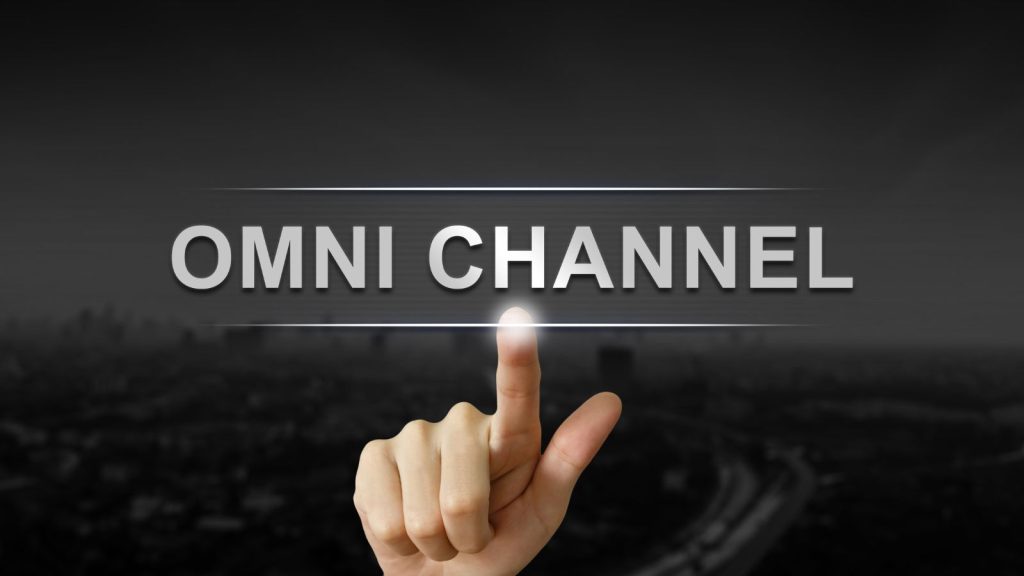
Omni-Channel Experiences
The modern consumer is a master of multi-device, multi-platform navigation. They switch seamlessly between smartphones, tablets, laptops, and various online channels, choosing the most convenient platform for their needs. While this channel-hopping may not always align with a brand’s preferred touchpoints, it’s imperative to accommodate customers’ expectations and preferences.
To thrive in a non-linear marketing landscape, businesses must offer an omni-channel experience. This means providing a seamless and consistent experience across all channels and devices that customers may use. It’s essential to strike a careful balance between delivering a cohesive brand experience and avoiding the risk of stretching resources too thin.
Consider beginning with a basic configuration that covers the essentials, including your website, email, and key social media channels. This foundational setup allows you to reach a broad audience while maintaining manageable resource allocation. Over time, you can expand your presence on the social platforms that align most closely with your target audience.
Non-Linear Marketing: A Comprehensive Approach for Loyal Customers
Non-linear marketing demands a comprehensive approach that extends far beyond sporadic advertising efforts. When executed effectively, non-linear marketing can result in a loyal and satisfied customer base. By acknowledging and accommodating the diverse and evolving customer journey, businesses can create meaningful and lasting relationships with their audiences.
In the non-linear marketing landscape, customers wield significant power and autonomy. They choose when and how to interact with brands, seek information independently, and rely on peer recommendations and online resources. To thrive in this environment, businesses must adapt by providing value, consistency, and trust.
What’s Next?
As businesses navigate the complexities of non-linear marketing, they often encounter challenges in managing and disseminating product data and images across multiple channels. This is where Catsy DAM & PIM, a robust product information management and publishing platform, steps in to streamline the process.
Catsy DAM & PIM enables businesses to efficiently collect, manage, and distribute product information, including images, across various platforms and channels. With Catsy DAM & PIM, centralized product data can be accessed throughout the organization, listed on e-commerce platforms, shared with partners, and published seamlessly. This comprehensive solution empowers businesses to reach customers wherever they shop and share data effortlessly with outside sales teams and dealers.
In a non-linear marketing landscape where consistent and accurate product data is paramount, Catsy DAM & PIM serves as a vital tool for reducing friction in product data and image management. To explore how Catsy DAM & PIM can enhance your product data management and streamline your marketing efforts, sign up for a demonstration today.
In the ever-evolving landscape of non-linear marketing, businesses must adapt to the complexities of the modern customer journey. Gone are the days of linear paths and direct brand interactions. Today’s consumers chart their own course, exploring various touchpoints and channels independently. To succeed in this dynamic environment, businesses must adopt a holistic approach that integrates marketing efforts, leverages content to build trust provides an omnichannel experience, and prioritizes customer relationships.
Non-linear marketing is not just a shift in strategy; it’s a fundamental transformation in how businesses engage with their audiences. When executed effectively, it leads to loyal and satisfied customers who choose your brand over competitors. As you navigate this intricate landscape, consider the role of technology solutions like Catsy DAM & PIM, which can streamline the management of critical product data and images across diverse channels.
With the right strategies and tools in place, your business can confidently navigate the non-linear marketing terrain, ensuring that your brand remains relevant and resonant with customers in an ever-changing digital world.
More at www.catsy.com .
http://60secondmarketer.com/blog/2016/08/28/definition-of-nonlinear-marketing/
http://www.targetmarketingmag.com/article/non-linear-marketing-working-with-multiple-narratives/all/
https://econsultancy.com/blog/67954-what-is-non-linear-advertising-how-can-it-help-publishers/
https://thenextscoop.com/non-linear-marketing-campaigns-traditional-marketing/
Speed to Market
Product information management (PIM) is a catalog software tool built to speed products to market.
Digital asset management (DAM) is a software used to organize and enrich digital assets.
Ceejay S Teku
- August 16, 2017

The Evolution of PIM Software: Product Info Management in the Digital Age

Beyond Spreadsheets: The Advantages of Adopting PIM Software

Guide to PIM for Manufacturers: Streamlining Data and Boosting Success

Keeping Your Content on Course!
505 N La Salle Drive, Suite 300
Chicago, IL 60654
(312) 212-0086
- What is PIM
- PIM for Brands
- PIM for Distributors
- PIM for Retailers
- What is PXM
- Data Governance
- Asset Transformation
- Customer Service
- Marketplaces
- BigCommerce PIM
- Shopify PIM
- Magento PIM
- Careers - Grow with us!
- Request A Demo
A Guide to Customer Journey Optimization
- By Totango Team
- October 1st, 2019
Being a customer-centered enterprise means acting as a trusted advisor and helping your customers get greater business value from your product. The aim is to create customer lifetime value by nurturing sustained expansion over time for mutually beneficial growth. But sustained growth is hard to achieve without a clear path forward.
Customer journey optimization is a way of not only mapping the stages of customer progression but also identifying ways to add customer value along the way. Because the customer journey is not linear, your customers may be split between your sales and customer success team. For example, your customer needs to onboard two new employees while simultaneously working through an upsell with your sales team. By constantly monitoring the customer journey, you can proactively engage your customer to reduce churn and foster a long-term relationship with mutual rewards.
Customer Journey Optimization 101
With the digitization of business, enterprises must align their goals with those of their customers. Successful enterprises are becoming customer-centered, deriving sustainable recurring value for themselves by delivering recurring value to their customers. Delivering value depends on understanding the customer at every stage of their product journey. Start out by setting a number of measurable goals based on the needs of the customer and your organization. These goals should be tracked, constantly re-evaluated, and adjusted at any stage of the customer journey if it is not providing results.
In simple terms, you want to accurately understand the current customer experience, then improve it to realize the maximum possible customer lifetime value.
This challenge begins by mapping the road ahead. The customer journey is best understood as four main phases:
Each phase of the customer journey can be optimized through the pursuit of customer-centric goals. These goals are drawn from customer data and should focus on metrics and proactive engagements that have a positive impact on a customer’s experience of value.
1. Onboarding
The primary goal of onboarding is to accelerate the customer’s experience of value. The customer will stay in this phase until they can integrate the product into their everyday workflows and start to realize business value. Until then, the customer needs to feel supported and have access to advice and assistance whenever required.
To provide that support, the customer success team needs to know all it can about the customer. A smooth handover from the sales team should include information on why the customer bought the product, what problem they are trying to solve, and their timeframe expectations. This information, and all future information generated through customer engagements, should be stored and organized in one accessible location.
This information can be used to personalize and constantly improve the onboarding process. It should guide kick-off talks and be used to prioritize training so that features closely related to the customer’s business goals are adequately covered.
Each onboarding program should build on the lessons of previous successes and failures. The information gathered from previous programs should make it easier to monitor current customers, providing a guide for appropriate time to completion and a warning system for potential bottlenecks. Pairing previous knowledge with current customer monitoring makes it possible to establish achievable goals that define progress toward product familiarity.
Goals to Consider:
- Consistently meet completion targets.
- Track the customer experience.
- Analyze support tickets and make adjustments to the onboarding process as needed.
- Assess product usage after exiting onboarding.
2. Adoption
A customer exits onboarding when they are comfortable enough with a product to use it independently. The goal in the adoption phase is to use knowledge of the customer’s business goals to guide them toward recurring value. This is achieved by closely monitoring the customer to make sure they’re using the right product features in the right way .
There are a number of metrics that can be used to monitor the customer experience. Look at current customer information drawn from product and feature usage, Voice of Customer feedback, support tickets, and more to create a living understanding of the customer experience .
To optimize the adoption phase, this understanding needs to lead to action. Automated alerts can be attached to the customer data to make it easier to monitor accounts across an enterprise, but they are only as valuable as the engagements that follow. It is important to have strategies in place to boost product interest where the customer is shown to be waning and to make the most of expansion opportunities when a customer is fully engaged.
Goals to Consider:
- Product usage compared to benchmarks.
- High license utilization.
- High product feature access.
Renewal and churn are not tied to specific dates on a calendar. Rather, they are the result of the overall customer experience . The metrics outlined above are early warning systems that provide an enterprise with ample time to proactively engage with customers and make sure customer satisfaction is moving in a positive direction when the formal renewal process begins.
Once that renewal campaign begins, it needs to be personalized to the customer and their unique journey. By analyzing customer information accrued since the sales event, it is possible to trace a customer’s entire product history—provided this hub of information has been made accessible across the enterprise.
Armed with personalized data, it is easier to demonstrate your enterprise’s deep connection to the customer and set them up for even greater success in the future.
- Focus on renewals at risk.
- Increase renewals on time.
- Focus on increasing renewal rate.
4. Escalation
Optimizing customer escalations is all about keeping the customer informed and working quickly. Every business relationship runs the risk of something going wrong, but optimal escalation strategies can improve customer satisfaction. Customers who experience a positive resolution to a problem are more likely to be brand loyal than those who have never been exposed to an enterprise’s customer support services.
For those services to operate smoothly, every member of the enterprise needs to have access to detailed customer information and product history. This makes it possible to personalize customer messaging, provide accurate estimates on resolution timeframes, and to keep the customer informed of every step in the resolution process.
Customers who feel they are being listened to also feel valued. Customers who feel valued remain loyal.
- Respond quickly to escalations in the desired number of days.
- Minimize number of new escalations
- Seek Voice of Customer feedback after resolution.
Understanding the Customer to Optimize their Journey
There are customer journey optimization opportunities at each step along the customer pathway from onboarding to renewal. And rather than attempting to handle all these moving parts manually, we recommend you use customer success software . Such software makes it easy to gather, analyze, and share customer data across an enterprise. Because the customer journey is not linear, the right customer success software can help your team manage a customer who is onboarding new employees while navigating a renewal. You can track progress through the customer journey at a glance and set up automatic triggers that will notify you of any concerning behavior.
With continual customer monitoring using customer success software, it is possible to maximize a customer’s experience of value at any point. You can only guide your customer toward future growth that benefits you both if you remain closely involved in their journey every step of the way.
Totango ’s customer success platform helps enterprises simplify the complexities of customer success by turning customer data and customer monitoring into value-driven, proactive engagements. By staying in contact with your customers throughout their journey, you reduce churn, promote customer growth, and maximize value over time. Request a demo to get started. Or, explore Spark to chart a better customer journey.
- Posted on: October 1st, 2019
Get the latest in customer success best practices
Ready to get started.
- Skip to main content
- Skip to primary sidebar
- Skip to footer
- QuestionPro

- Solutions Industries Gaming Automotive Sports and events Education Government Travel & Hospitality Financial Services Healthcare Cannabis Technology Use Case NPS+ Communities Audience Contactless surveys Mobile LivePolls Member Experience GDPR Positive People Science 360 Feedback Surveys
- Resources Blog eBooks Survey Templates Case Studies Training Help center
Marketing Funnel vs Customer Journey: The Key Differences
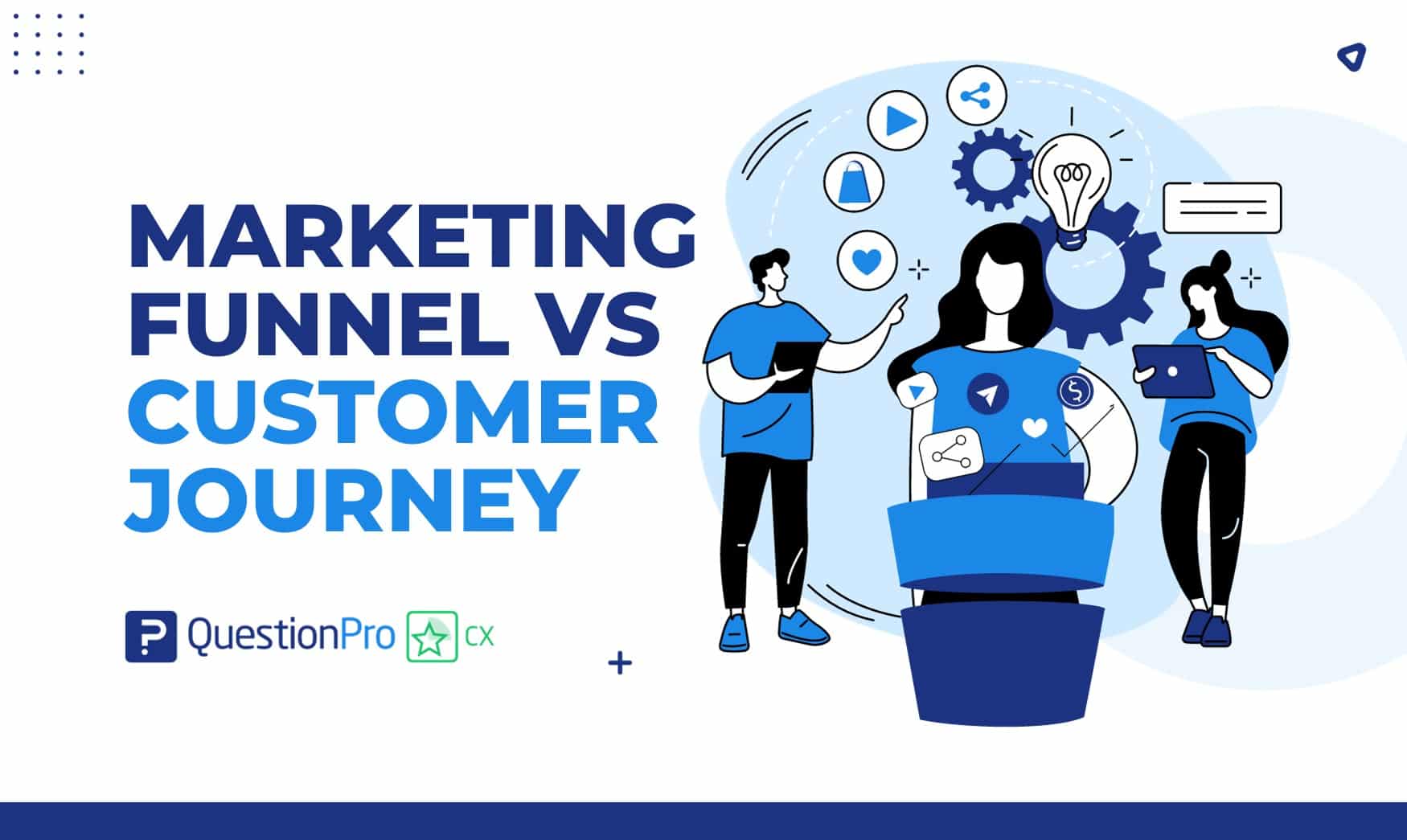
In the dynamic world of marketing, two fundamental concepts often discussed are the marketing funnel vs customer journey. These terms are frequently used interchangeably but represent distinct aspects of the customer’s path from initial awareness to becoming a loyal advocate.
In this blog, we will delve into the details of both the marketing funnel vs customer journey, exploring their stages and, most importantly, the key differences that set them apart.
What is a Marketing Funnel?
A marketing funnel, often referred to as a sales funnel, is a visual representation of the customer’s journey through various stages of the sales and marketing strategy. Imagine it as a visual guide to your journey as a customer through different phases of the sales and marketing process.
They call it a “funnel” because it looks like an upside-down pyramid, wide at the beginning and gradually narrowing down, showing how you become fewer potential customers as you move through these stages.
Stages of Marketing Funnel
The marketing funnel consists of several stages representing the customer’s journey, from initial awareness of your product or service to purchasing. These stages are as follows:
This is the top of the funnel. At this stage, potential customers become aware of your brand or product. They might come across your brand through various channels such as social media, online ads, word-of-mouth, or content marketing. The key is to grab their attention and make them aware of your existence.
After becoming aware of your brand, some individuals will express an interest in learning more. They may engage with your content, visit your website, sign up for newsletters, or follow your social profiles. The goal here is to pique their interest and keep them engaged.
Consideration
In this stage, potential customers are actively considering your product or service. They might compare it to alternatives, read reviews, and seek more information. Content like product comparisons, case studies, and customer testimonials can be particularly effective in this stage.
At this point, potential customers have a strong intent to make a purchase. They may have added items to their cart, requested a quote, or otherwise signaled their readiness to buy. The focus here is on moving them closer to the actual purchase.
The bottom of the funnel is where the actual purchase happens. Customers make a transaction, which could be an online purchase, a subscription, or any other action that directly contributes to your business’s revenue.
Post-buying process aims to maintain and enhance customer relationships. This stage is often overlooked but crucial. It involves providing excellent customer service, encouraging repeat purchases, and nurturing customer loyalty. Loyal customers can become brand advocates and help you attract new customers.
Loyal customers who are delighted with your products or services may become advocates. They actively promote your brand through word-of-mouth, social media, reviews, and referrals. This advocacy stage can also involve loyalty programs or incentives to encourage customers to refer others.
What is a Customer Journey?
The customer journey is a broader concept that encompasses the customer’s entire buyer journey experience with your brand. It extends beyond the stages leading to a purchase and includes post-purchase interactions and how you perceive our brand over time.
Unlike the marketing funnels, your customer journey is not limited to a linear, one-size-fits-all path; it can be complex and nonlinear.
Customer journey mapping is a valuable process for businesses, as it helps them create a customer journey map that visualizes the entire customer experience model from initial contact to post-purchase support.
Stages of Customer Journey
The customer journey is a more extensive concept that includes the customer’s entire experience with your brand, encompassing pre- and post-purchase interactions. The stages of the customer journey model can be somewhat flexible and non-linear, as customers may revisit or skip stages based on their unique experiences and preferences.
Here are the general stages of a customer journey:
The journey begins when a potential customer becomes aware of your brand or product. This initial awareness can result from various sources, such as advertising, socially engaging platforms, word-of-mouth, or online research.
The customer actively researches and evaluates your product or service during this stage. They might compare it with alternatives, read reviews, or seek recommendations from friends or online communities.
Evaluation/Decision
At this point, the customer decides whether to make a purchase. They might be deciding between your offering and a competitor’s or evaluating different options and packages you provide.
This is the moment when the customer makes a transaction, whether it’s an online purchase, an in-store buy, or any other form of conversion. It’s the culmination of their decision-making process.
Post-Purchase Experience
After making a purchase, the customer begins to experience your product or service. This stage is crucial because it influences their overall perception of your brand. Providing excellent customer support, clear instructions, and ensuring product satisfaction is essential.
If your product or service meets or exceeds the customer’s expectations, they may become loyal. Loyal customers are more likely to make repeat purchases and continue engaging with your brand.
Loyal customers who are delighted with your brand may turn into advocates. They actively promote your brand through word-of-mouth, social media, reviews, testimonials, or referrals. Their advocacy can attract new customers and help build brand credibility.
Reevaluation
Some customer journey maps may include a stage of reevaluation. After being a loyal customer, they may decide to revisit the consideration stage to explore new products, upgrades, or different brands.
The Difference Between Marketing Funnel vs Customer Journey
The marketing funnel helps guide the conversion process. At the same time, the customer journey provides a more comprehensive view of the customer’s relationship with the brand. Below is a table that highlights the key differences between a marketing funnel vs customer journey:
Understanding the distinction between the marketing funnel vs the customer journey is crucial for crafting effective marketing strategies. The marketing funnel offers a structured way to convert your leads into customers, while the customer journey focuses on the lasting relationship between your brand and your customers.
You need to find the right balance between these two ideas to succeed in your marketing efforts. Keep in mind that customer experiences don’t end with a purchase; they extend into loyalty and advocacy, which can fuel sustained business growth.
You can strengthen and prolong your customer relationships by harnessing the potential of both the marketing funnel and the customer journey.
QuestionPro facilitates data collection, analysis, and feedback at various marketing funnel stages, aiding in segmentation, optimization, and performance tracking.
It supports personalized experiences, satisfaction measurement, and touchpoint analysis in the customer journey, helping businesses enhance the entire customer lifecycle and achieve long-term success.
QuestionPro empowers businesses to optimize their marketing funnel and customer journey by providing data-driven insights. To get started, create an account today for comprehensive customer experience analysis.
LEARN MORE FREE TRIAL
MORE LIKE THIS

NPS Survey Platform: Types, Tips, 11 Best Platforms & Tools
Apr 26, 2024

User Journey vs User Flow: Differences and Similarities

Best 7 Gap Analysis Tools to Empower Your Business
Apr 25, 2024

12 Best Employee Survey Tools for Organizational Excellence
Other categories.
- Academic Research
- Artificial Intelligence
- Assessments
- Brand Awareness
- Case Studies
- Communities
- Consumer Insights
- Customer effort score
- Customer Engagement
- Customer Experience
- Customer Loyalty
- Customer Research
- Customer Satisfaction
- Employee Benefits
- Employee Engagement
- Employee Retention
- Friday Five
- General Data Protection Regulation
- Insights Hub
- Life@QuestionPro
- Market Research
- Mobile diaries
- Mobile Surveys
- New Features
- Online Communities
- Question Types
- Questionnaire
- QuestionPro Products
- Release Notes
- Research Tools and Apps
- Revenue at Risk
- Survey Templates
- Training Tips
- Uncategorized
- Video Learning Series
- What’s Coming Up
- Workforce Intelligence
- Skip to primary navigation
- Skip to main content
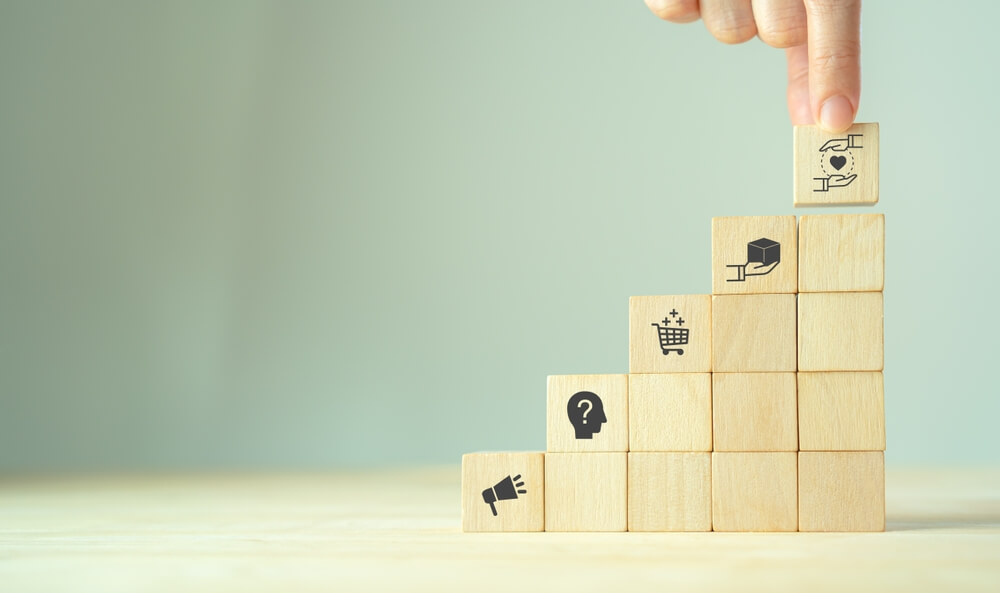
For Great Success, Know and Understand the SaaS Customers’ Path
Get in touch with Marina
Subscribe to our weekly newsletter
Stay up to date with the latest digital trends.
Business marketing solutions improve when considering the customer's buying journey. Focusing on the buyer's journey in software-as-a-service (SaaS) allows firms to formulate strategies that guide their customers from awareness to advocacy.
Because SaaS is a digital product with ongoing, subscription-based use, its customer journey is unique. Unlike other industries' one-time purchases, a SaaS marketing agency focuses on onboarding, continuous engagement, and renewal or upselling. This guide covers the following SaaS customer paths:
- Consideration
- Usage and engagement
- Support and assistance
- Renewal or upselling
- Advocacy and loyalty
- Feedback loop
Learn about the challenges of SaaS marketing to further boost your software brand. Let’s go!
Want to know how we help SaaS businesses stand out from the crowd? Watch this video to learn how DAP makes it happen!
1. Awareness Stage
The awareness stage marks the initial phase of a potential customer's journey when they become aware of a SaaS product or service. Various marketing initiatives, such as content marketing, social media presence, word-of-mouth recommendations, and search engine optimization (SEO) techniques , typically trigger this stage.
SaaS companies can benefit from the awareness stage by improving brand visibility and attracting a broader audience. This is an excellent opportunity to create a favorable first impression, communicate their SaaS product's value proposition, and spark interest.
They use metrics such as website traffic, click-through rates, and social media engagement to track this stage and count the number of leads generated. Tools such as Google Analytics and marketing automation platforms also provide valuable insights into awareness-building strategies.
Monitoring the awareness stage helps SaaS companies refine their marketing strategies. They could identify the most successful channels and tailor their messaging to better resonate with the target audience.
2. Consideration Stage
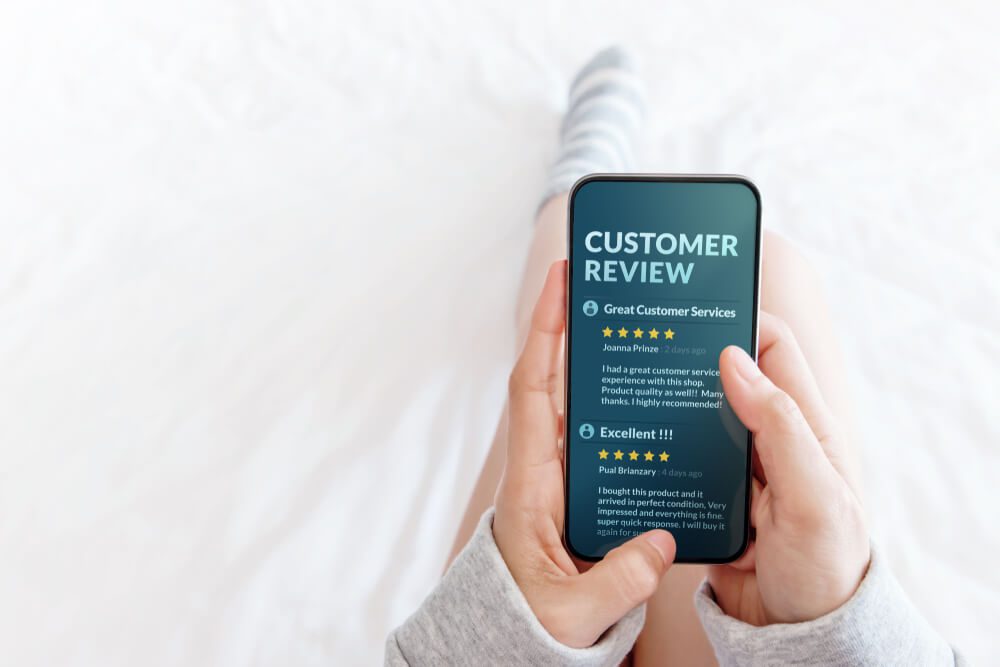
The consideration stage is when potential customers actively evaluate and compare different SaaS solutions as they seek to address their specific needs or problems. During this stage, customers gather information to decide which SaaS product aligns best with their requirements.
Potential customers typically engage in in-depth research. They read reviews, compare feature sets, explore product demos, consult user forums, and seek advice from peers or industry experts.
SaaS companies need to provide valuable and relevant content through content marketing strategies . It helps to maximize consideration by considering comparison guides, case studies, and detailed product documentation. They also need webinars, live demos, and personalized consultations to demonstrate their product's capabilities.
Marketers monitor website engagement metrics, conversion rates for gated content (e.g., ebooks or whitepapers), and the number of demo requests or trial sign-ups. Analyzing customer feedback and understanding the reasons behind lost deals help SaaS companies fine-tune their offerings as well.
3. Decision Stage
The decision stage is pivotal in the customer's journey to adopt a particular SaaS solution. Potential customers have narrowed their options and focused on selecting the SaaS product that most aligns with their needs and budget.
Potential customers often interact directly with SaaS providers to get more information about their products. They might request personalized product demonstrations, speak with sales representatives, or try the software extensively to evaluate its suitability.
SaaS companies have to create a seamless transition from evaluation to adoption. They can offer clear pricing structures, straightforward onboarding processes, and exceptional customer support to instill confidence.
SaaS firms must monitor conversion rates from trial to paid customers, understand the reasons behind lost opportunities, and assess the effectiveness of sales and onboarding processes. Customer feedback and post-purchase surveys provide valuable insights for continuous improvement and optimization of this stage.
4. Onboarding Stage

The onboarding stage is critical when new customers begin setting up and using the SaaS product to which they have subscribed. This stage focuses on guiding users through the initial steps to ensure a positive first experience.
Customers usually rely on the SaaS company's resources, including tutorials, documentation, and help center articles. They also seek assistance through live chat or support channels.
SaaS companies should use strategies to reduce churn and increase retention rates. Effective onboarding makes sure that users quickly understand how to use the product and derive value to remain paying customers.
They monitor user engagement with onboarding materials and complete critical setup tasks. They use customer feedback to improve the onboarding process. Metrics, such as time to first value and user activation rates, are also valuable indicators of the success of the onboarding stage.
5. Usage and Engagement Stage
The usage and engagement stage defines the ongoing interaction between customers and the SaaS product. It focuses on making sure that customers actively use and engage with the software to derive value from it over time.
SaaS companies employ user behavior analytics and product usage metrics to monitor how customers navigate the platform. In addition, these show which features they utilize most and the frequency of their interactions.
Companies benefit from this stage by promoting user retention and satisfaction. Engaged and active customers are more likely to renew subscriptions and become advocates for the product. They can also upgrade to higher-tier plans.
Increased usage also provides valuable data for product improvement and feature development. Tracking this stage involves analyzing user metrics such as logins, feature adoption rates, time spent in the application, and customer feedback.
6. Support and Assistance Stage
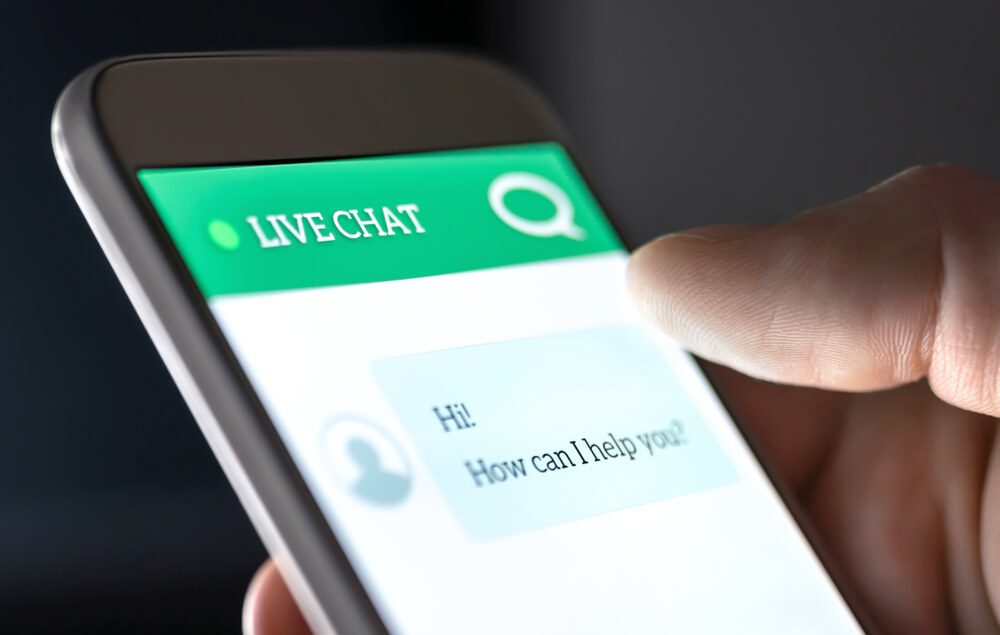
The support and assistant stage involves providing ongoing customer support and assistance to address any questions, issues, or challenges that customers encounter while using the SaaS product. It aims to guarantee that customers have a positive and smooth experience and receive timely assistance when needed.
Information about this stage comes from customer support interactions, including helpdesk tickets, chat logs, email inquiries, and phone calls. Customer feedback, both positive and negative, is also a valuable source of information.
SaaS companies benefit from this stage by fostering customer loyalty and preventing churn. Effective support and assistance can turn potentially frustrated customers into satisfied, long-term users. It provides an opportunity to identify areas for product improvement based on customer feedback.
They monitor the support and assistance stage by measuring response times, issue resolution rates, and customer satisfaction scores from support interactions. Metrics, such as customer retention rates and the reduction of support ticket volumes, indicate the effectiveness of the support and assistance stage.
7. Renewal or Upsell Stage
The renewal or upsell stage involves approaching existing customers for subscription renewals or upgrades to higher-tier plans or more features. This is a crucial point in the customer journey where SaaS companies aim to retain and expand their customer base.
Information to improve this stage is through subscription data, usage metrics, and customer segmentation. Companies track customer behavior patterns and monitor which customers are approaching their renewal dates.
SaaS companies have to secure recurring revenue through subscription renewals and drive additional revenue through upsells. This stage allows them to maximize customer lifetime value and deepen their relationship with existing customers.
Tracking the renewal or upsell stage involves monitoring renewal rates, analyzing upsell conversion rates, and assessing the impact of retention strategies. Data from customer feedback, satisfaction, and the reasons behind renewals or upsells provide insights into optimizing this stage.
8. Advocacy and Loyalty Stage

The advocacy and loyalty stage is when satisfied customers advocate for the product or brand. They promote it to others and show long-term loyalty. This is when customers actively share positive feedback, refer others, and engage in activities contributing to brand advocacy.
SaaS companies gather information about the effectiveness of their advocacy and loyalty stages through email and other channels, including customer reviews, testimonials, referral programs, social media mentions, and online communities or forums. SaaS companies also track customer sentiment and net promoter score (NPS) to gauge advocacy and loyalty levels.
Loyal customers continue their subscriptions and help expand the customer base through word-of-mouth recommendations. These customers provide valuable insights and ideas for product improvement.
Tracking customer referrals, the success of referral programs, and social media mentions or reviews are critical during the advocacy and loyalty stage. Companies must assess growth in their user communities or forums and measure the impact of loyalty initiatives on customer retention and expansion efforts.
9. Feedback Loop Stage
The feedback loop involves gathering, analyzing, and acting upon customer feedback at various points in the customer journey. It is a systematic approach to understanding customer needs , preferences, and pain points to drive continuous improvement.
SaaS companies collect information through surveys, feedback forms, customer interviews, social media, and support interactions. They utilize feedback from user communities and product usage data to gain insights.
Companies enhance their products, services, and customer experience based on actionable insights from their customers. It helps them correct issues, find growth opportunities, and optimize marketing and customer success strategies.
Tracking the feedback loop stage involves measuring response rates to feedback requests and monitoring customer sentiment. It also includes assessing the impact of changes in response to feedback on customer satisfaction, retention, and growth metrics. The feedback loop stage is an iterative process to ensure continuous alignment with customer expectations and market needs.
The customer journey is not always linear. Customers might move back and forth between stages and their experiences might vary. Mapping this journey helps SaaS companies understand customer needs, tailor communication, and enhance user satisfaction.
Skip the endless hours of tracking and optimizing your SaaS marketing strategies. Have more time to focus on your business by working with the top SaaS marketing agency. Contact Digital Authority Partners (DAP) today.
Want To Meet Our Expert Team?
Book a meeting directly here
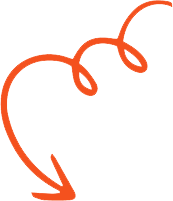
Related Articles

Your potential audience is vast and diverse. How do you market effectively on a worldwide stage? Divide and conquer. ...
Software-as-a-service (SaaS) marketing segments customers by shared traits or behaviors. This strategy helps SaaS com...

Software-as-a-service (SaaS) companies are constantly searching for innovative strategies to navigate complex marketi...
How Can We Help?
Fill out the short form below or call us at:.

Contact our team
One of our consultants will get back to you within 24 hours..

Advertisement
AI and the Art of Non-Linear Customer Experience
- April 22, 2024 at 8:24 AM EDT
- By Matt Whitmer, Mosaicx
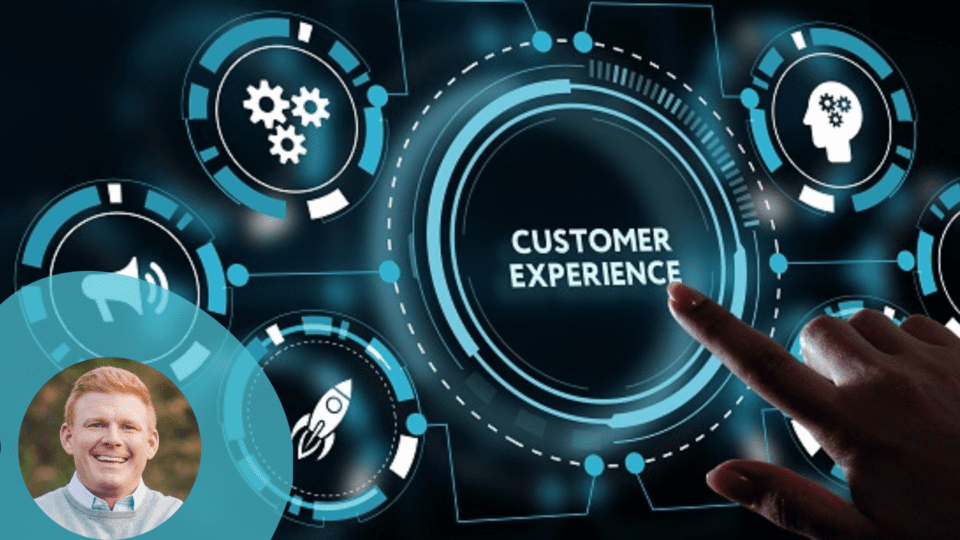
In the not-so-distant past, customer experience (CX) was a straight line — a predictable journey from point A (the customer’s question) to point B (the company’s answer). However, as retail landscapes evolved and consumer demands became more sophisticated, this linear approach showed limitations.
Welcome to the future of retail, where the checkout lines are virtual, the service is personal and the experience is anything but linear. AI is opening a realm of non-linear CX and helping turn every interaction into an opportunity to impress, engage and retain. This evolution from a linear to a non-linear approach in CX is reshaping the fabric of the retail industry.
The Fundamentals of Non-Linear CX
Non-linear CX is about responding in real time to the customer, creating a personalized experience with every interaction. This approach deviates from traditional models by responding to customer queries and anticipating them, offering solutions tailored to the customer’s history with the brand.
At the heart of non-linear CX is AI with its conversational and generative capabilities. AI enables engagement with customers in more dynamic and intuitive ways. Today’s intelligent virtual agents (IVAs) pair AI with natural language processing (NLP) to understand customer intent in a way that old-school linear models never could. Imagine a virtual agent that doesn’t just respond to a single question but can handle a barrage of inquiries simultaneously and in natural language.
Non-linear service powered by AI enables flexibility. It allows companies to meet customers where they are in their journey, whether they’re just browsing, ready to make a purchase or seeking post-purchase support. IVAs can more easily discern what customers are looking for and proactively suggest additional products or services. It’s like having a personal shopper who finds what you asked for and offers items you didn’t know you needed.
Implementing Non-Linear CX
Transitioning to a non-linear customer service model might sound like a Herculean task, but it doesn’t have to be. The key is to start by reviewing existing systems, determining where it makes sense to incorporate AI and then testing it. The next stage is integrating AI into internal processes before rolling it out in customer-facing applications. This phased approach allows businesses to fine-tune their AI systems, ensuring they’re ready for prime time.
The first step is choosing the right AI technology that integrates seamlessly with your existing systems, whether it’s your customer relationship management platform or customer service software. The implementation process might involve technical heavy lifting, like API integrations, but the payoff is worth it.
Training is another critical component of implementing non-linear customer service. Your team must understand how to work alongside AI, leveraging its strengths and stepping in when a human touch is needed.
Here are three examples of non-linear CX in action:
- Multichannel support: In the non-linear world, customers can jump from social media to email to phone, all without missing a beat. AI ties these channels together, ensuring that a conversation can continue seamlessly across platforms, regardless of where it starts.
- Self-service options: Self-service tools like FAQs and knowledge bases empower customers to find answers on their terms. The magic of AI is that it can pull from these tools to answer customer questions if they call or start a chat. AI tools can either direct customers to existing tools or provide answers from those resources, reducing the load on your customer service team.
- Predictive support: The most exciting aspect of non-linear and AI-enabled CX is its ability to anticipate customer needs. By analyzing data from past interactions, AI tools can predict potential issues and offer solutions before the customer realizes there’s a problem. This proactive approach is seen in multiple industries, from telecommunications — where providers address network issues before they affect users — to ecommerce platforms that engage customers at critical moments to prevent shopping cart abandonment.
Challenges and Considerations
One of the primary considerations of the shift to non-linear, AI-driven CX is maintaining the integrity and privacy of customer data. Ensuring that customer information is protected — while still being utilized to its fullest potential — requires a dedicated adherence to data protection regulations, such as those laid out in the California Privacy Rights Act and the EU’s General Data Protection Regulation.
Another challenge is the potential for AI to misinterpret customer intent or provide inaccurate responses. Because of this, having responsible monitoring processes in place is essential to minimizing errors and ensuring that the customer experience remains positive.
The transition to a non-linear CX model is not merely about adopting new technology — it’s about reimagining what the customer experience can be. It requires a commitment to continuous improvement, a willingness to embrace change and a dedication to putting the customer at the heart of decision-making.
If your organization is ready to explore the possibilities of non-linear CX, an excellent place to begin is by evaluating your current model. Identify areas where AI can make the most immediate impacts and consider a phased approach to implementation. Starting small is critical — but so is getting started as soon as possible. As we look forward, the question for retailers is not whether they should adopt non-linear CX but how effectively they can do so.
Matt Whitmer is the Chief Revenue Officer and SVP of Marketing at Mosaicx , a leading conversational AI provider. He has over 15 years of senior leadership experience focused on helping enterprise clients embrace and implement cloud-based engagement solutions.
- Posted In: AI & Machine Learning , Customer Experience , Data & Analytics , Digital Commerce , Digital Marketing , Email Marketing , Executive ViewPoints , Personalization , Predictive Analytics , Social Commerce , Workforce & Scheduling
- Tagged With: gen AI , IVA , Matt Whitmer , Mosaicx , NLP , privacy
Feature Your Byline
Submit an Executive ViewPoints.
- June 4-6, 2024
- Chicago, IL
Join the retail community as we come together for three days of strategic sessions, meaningful off-site networking events and interactive learning experiences.
Get access to exclusive content including newsletters, reports, research, videos, podcasts, and much more.
Address: 100 Broadway, 14th Floor New York, NY 10005
Phone: 1.888.603.3626
Email: info [at] retailtouchpoints.com

Access The Media Kit
Access our editorial calendar.
Sign up today for O*Academy’s Design Research Mastery Course
- UX Research & UX Design
- UX Staff Augmentation
- Service Design
- Design Workshops
- Case Studies
- Why Outwitly?
- Outwitly Team
- Diversity, Equality and Inclusion
The Power of Customer Journey Mapping: 101
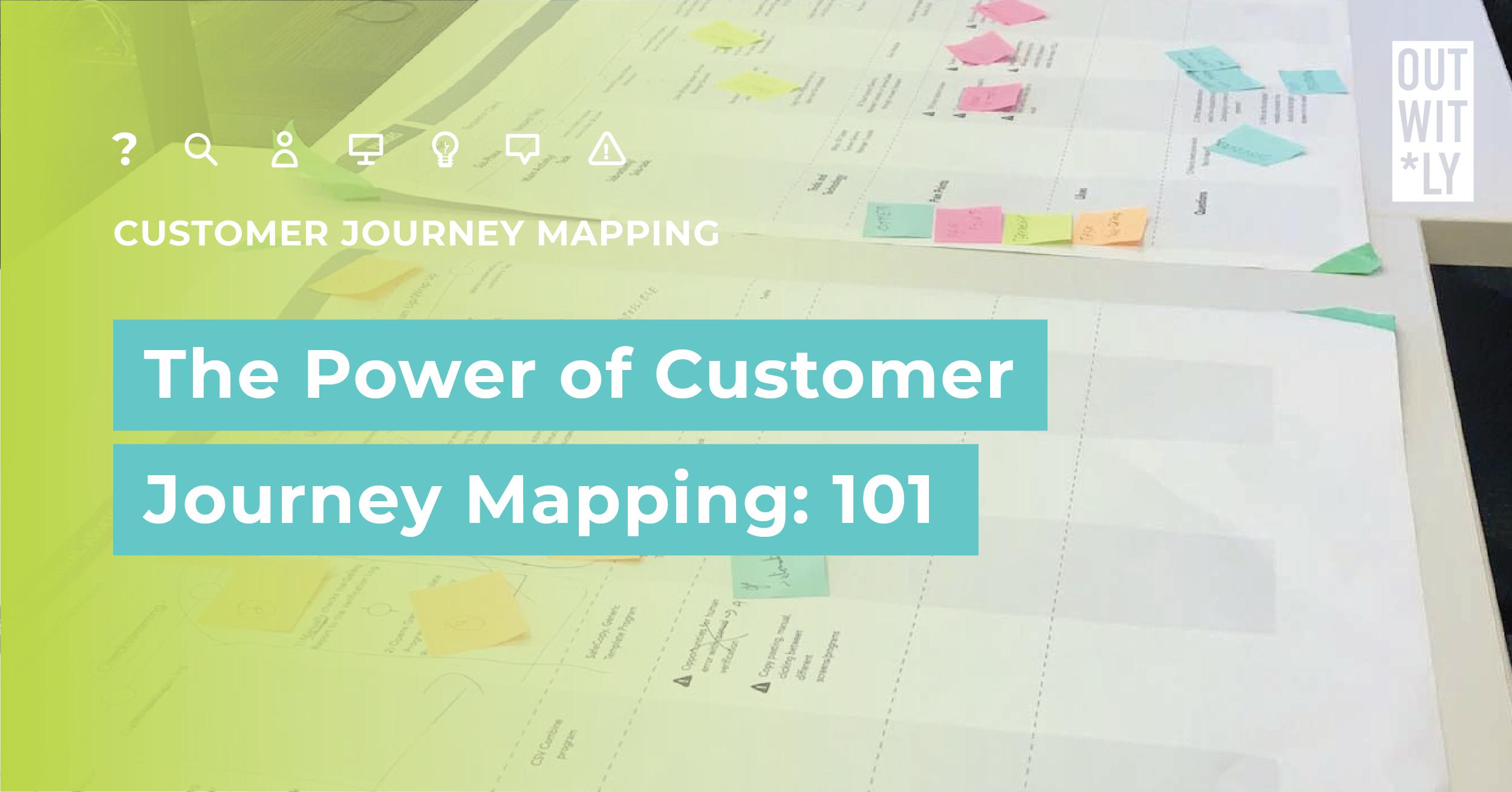
We all need maps to show us the way sometimes––the journey is just as important as the destination!
In this three-part blog series, we’re breaking down one of our favourite service design tools: Customer Journey Maps! We will cover:
Customer Journey Mapping 101: What are customer journey maps, and why do you need them? (this post)
Customer Journey Mapping 201: How to Research and Build a Customer Journey Map
Customer Journey Mapping 301: Designing for the future, evolving your map, and making it actionable
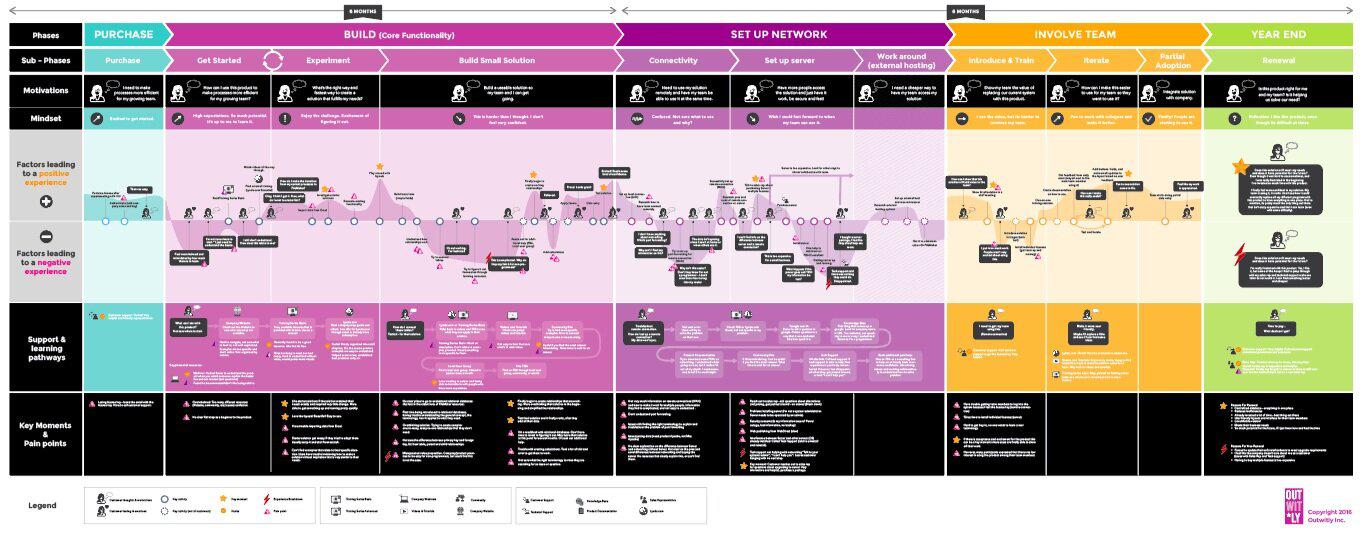
This week we’ll introduce you to customer journey mapping, we’ll discuss the different types of maps used in service design, and then we’ll clarify why creating customer journey maps is so ridiculously beneficial for your organization!
What is journey mapping?
Customer Journey Mapping is a powerful storytelling and design tool that will reveal the complexity of your customer/citizen/user experience in a way that is truly easy to understand, by literally mapping it out in front of you. Journey maps, based on research with real people, enable you to clearly see the paths your customers are taking with your organization, products, and services (their “Current State” Journey), in order to better envision, build, and re-route their experiences and paths into the “Ideal” or “Future State” Journey.
With journey mapping, you can identify your customers’ major pain points as well as key areas for opportunity and improvement, and with this research well in-hand, you and your team can make a prioritized action plan and roadmap for the future.
Why are journey maps important?
Journey maps are crucial business tools for many reasons. Not only is the market tough and competition high, but user expectations are increasing every day. Customers today expect beautiful, easy-to-navigate apps–and this expectation of ease and intolerance for “frustrating” experiences has also bled into other sectors…specifically, their non-digital and physical interactions with services.
Brand loyalty is also more precarious than ever. Simple interactions with companies now entail complex systems and interconnected webs of people and technology. Customers expect that there is a single chain of information carried throughout all of their interactions with a brand, but this is often not the case. For example, if you call your insurance company’s customer support line to process a claim or discuss an issue, and you get put on hold, or passed to another agent who gives you different information, or you never receive a call back, you’re much more likely to become frustrated with that insurance brand…and you may harp about this bad experience to your friends––or change providers all together.
When we look closer at brand impressions, we can see that it is the sum of experiences across all touchpoints that leaves users feeling positively or negatively about a company. If a user generally has a good impression of a brand––but the experience falls apart when they call customer service for the third consecutive time and find themselves repeating everything––this can ruin their entire experience, even if it’s only one part of their “journey.” Interestingly, people have a tendency to remember the end of their journey more than the middle or beginning, so it’s incredibly important to finish on a high note!
Related to this is the simple yet inarguable fact that millennials ( one of the largest segments of the population ) have very different purchasing behaviours than previous generations. They are much more skeptical of brands , and are far more willing to try new brands (or switch completely!) if it means they will have access to better services and products. For all of these reasons, in 2020, it’s crucial that companies continually seek to improve their end-to-end customer experiences––and journey maps can do just that.
What kinds of journeys can you map?
Journey mapping is best applied to map complex, multi-touchpoint (meaning: multiple points of contact or interaction with a company), multi-platform experiences––and each map often includes a fixed time frame, where tasks occur in a linear and chronological order. For instance, you could map how well users learn to use a specific tool or product over the course of one year. You might ask: When and why did they call customer or tech support? What feelings did they have after using the application? Were their expectations met?
MAPPING A PRODUCT OR SERVICE EXPERIENCE
You can map a customer’s experience with a single product or service best if their journey involves other touchpoints, too––e.g. researching the product online, purchasing it via the website, calling IT support, watching online tutorials, attending a class, and so on. If you’d simply like to understand a user’s experience downloading a cooking app directly from the App store, for example, a customer journey map may not be the right tool. Journey maps are best applied to multi-touchpoint products/services.
MAPPING A USER’S EXPERIENCE WITH TECHNOLOGY, OR A “DAY-IN-THE-LIFE” MAP
Mapping a user’s general experience with technology as they go about their daily activities is another common type of journey-mapping exercise. A physician who sees patients in the hospital, at a rehab centre, and in their private clinic might be using multiple different applications or manual ways to track patient data––and these systems often do not talk to each other. This can cause major headaches and a lack of continuity for doctors, nurses, office staff, patients, and their families, in addition to potentially serious miscommunications around medication, prescriptions, allergies, and so on. In this case, a healthcare provider or hospital team might be interested in understanding more about a physician’s typical daily routine, how many patients they interact with, and where information is falling through the cracks. “Day-in-the-Life” journey maps can be particularly useful for identifying areas of opportunity where a new feature or new technology could solve every-day frustrations.
MAPPING A USER’S JOURNEY TO ACHIEVE A SPECIFIC GOAL
Imagine that you are a financial institution, and you’d like to better understand a first-time home buyer’s experience acquiring a mortgage. Your ultimate goal is to offer better mortgage services in order to successfully attract more home buyers. Customer journey mapping would be a great resource for you. The map would outline a new home buyer’s entire current journey, including researching mortgages online, making an appointment through your company’s website, meeting in-person with one of your brokers, printing and signing the required documentation, feeling stressed the entire way along (etc.) The outcome of this research might indicate that your financial institution could do a better job at supporting first-time home buyers in the documentation aspect of their journey. From there, you would have the information you need to improve your services and products to attract more first-time home buyers to your company. Goal-oriented journey mapping can be extremely powerful.
View this post on Instagram A post shared by Outwitly | UX & Service Design (@outwitly)
Click through to explore a client journey map…
Who are you mapping?
Something that constantly bugs us at Outwitly is trying to establish how best to refer to the person or target at the centre of the journey map. Are they a customer, a user, a citizen, a doctor, an employee, a Siberian Tiger… (just kidding – but you get the point!) At the end of the day, the map represents someone’s journey. Whoever that person is depends on the project, so it could be a Customer Journey Map, a Citizen’s Journey Map, a Refugee’s First Year Living in Canada Journey Map, and on and on. Choose a term that makes sense for your specific project.

Different Service Design Mapping Tools
In the world of service design, human-centered design, and UX, there are many different types of visual storytelling tools and maps we keep in our design toolbox. We’ve created a list of a few that you may sometimes hear about.
Service Blueprints are similar to journey maps, except that they show both the front and back of house operations for a service or organization. Whereas a customer journey map shows one side of the story (the customer’s journey), service blueprints explore what employees are doing as they interact with the customer along the journey, whether that’s processing the customer’s information, assisting them in-store, shipping packages, and so on.
Experience Maps are generally interchangeable with customer journey maps. However, they tend more often to be non-linear (showing steps in a journey that are not necessarily occuring in chronological order), and they place a stronger emphasis on the user’s emotions, thoughts, and feelings throughout a journey. At Outwitly, we don’t draw a strict line between experience and customer journey mapping––we apply the tool (or a mix) that feels best suited for each project.
Customer Journey Maps, as we’ve explained, are most often linear and chronological. They depict the tasks, touchpoints, pain points, and opportunities for innovation and improvement as the customer or user interacts with various products, services, or technologies.
Ecosystem Maps illustrate all of the different stakeholders, people, organizations, tools, associations (etc.) involved in a particular initiative. They are best used for large complex projects that involve many different governing forces, stakeholders who need to be consulted, and/or lots of bureaucratic “red tape” that needs to be crossed.
Process Maps/Workflow Diagrams/Flow Charts are more traditional diagrams that depict a particular workflow or business process. They outline the steps needed in order to accomplish a workflow or process, as well as the individuals responsible for each step. They don’t often show pain points or issues in the workflow. At Outwitly, we typically don’t use these maps as they are non-user-focused. But they may be right for you depending on the scale of your project.
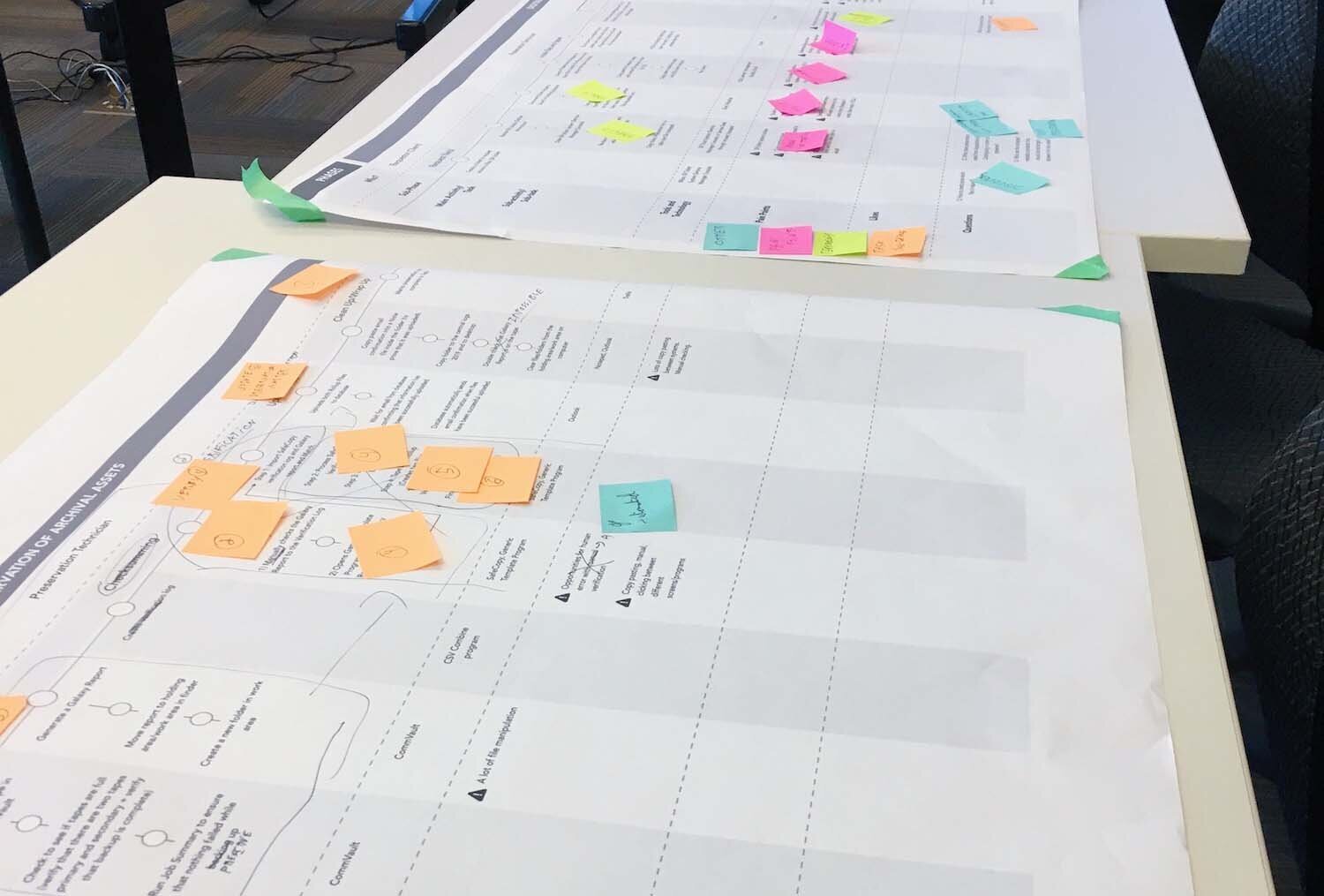
Journey Mapping Benefits
We believe customer journey mapping to be widely beneficial for so many reasons, as you’ve likely gleaned so far. Conducting any form of user research is great on its own, but journey mapping is unique in that it allows organizations to see the entire end-to-end experience (a holistic view) in one highly visual document. Journey mapping brings each pain point and part of the journey into perspective, showing relative importance as compared to other “less” painful parts of a journey. This relative importance can help an organization prioritize which areas to tackle and change first, and which initiatives can be tabled for later. A customer support team may think that their role in the customer’s journey is the worst, yet if studied across the entire experience, the product development team may be surprised to find that the mobile app is having some serious issues that are quite painful for the user and that the company should divert funds towards and address much sooner.
Journey mapping can also reveal the complexity and system-level problems facing customers, i.e. an experience at the beginning of a user’s journey can actually be at the core of their frustrations at a later part in the journey. These revelations have the added bonus of bringing together different departments and teams to talk through successes, failures, and things they’ve noticed, to align around common goals, and to ultimately work together to solve problems that were identified through the journey-mapping research.
Top Reasons for Journey Mapping
To recap, customer journey maps are powerful tools that can:
Allow organizations to understand and see an end-to-end experience in one document
Help companies understand their user/customers’ biggest pain points
Identify and correct operational inefficiencies
Show relative importance of pain points across the journey in relation to one another
Help prioritize initiatives and next-steps
Force different departments to come together to solve problems and create solutions, as well as breaking down silos and aligning stakeholders
Discover new product and service opportunities
Help your team build empathy for your customers
Improve your overall customer experience!
Are you ready to map your heart out? In Part Two of this series , we give you all the tools you need to research and create a beautiful journey map.
Resources we like…
Set strategic priorities with Outwitly’s FREE ebook, Building a Lasting Vision with North Star Principles
Mapping Experiences: A Complete Guide to Creating Value through Journeys, Blueprints, and Diagrams by Jim Kalbach. Check out pg 97 where Outwitly CEO and founder Sara Fortier’s work is featured!
Mapping Experiences Guide by Capital One Design (formerly Adaptive Path)
Related Posts
How to Research and Build a Customer Journey Map: 201
Making your Journey Map Actionable and Creating Change: 301
5 Reasons Why Your Organization Needs Design
How to Facilitate a Great Design Workshop
Similar blog posts you might like...

Service Design, UX, & HCD: What’s the difference?

Foundations of User Testing and Prototyping

7 Steps to Better Customer Experience (CX)
Subscribe to the weekly wit, what you’ll get.
- Hot remote industry jobs
- Blogs, podcasts, and worthwhile resources
- Free ebooks, webinars, and mini-courses
- Tips from the brightest minds in design
Ready to conduct user interviews like a pro?
Download our free user interview workbook.
Arcstar Co.,Ltd
Screenshots, description.
Journey to find emotions "ELLIA" is a premium rhythm game that weaves captivating stories into its gameplay. Experience breathtaking visuals and superb UI/UX, complemented by a carefully curated soundtrack of original music from Arcstar. Dive into the rhythm and play today! [Story] When Ellia, a girl who has lost her memories and emotions, comes under the care of the protagonist at the request of a familiar doctor, a unique journey unfolds. Using the Beatravel System, they extract "Emotion Pieces" from music to help Ellia recover her feelings and past. With assistance from androids Io and Dione, they uncover the shocking truths of Ellia's history. [Features] - A vast collection of original music tracks, rigorously vetted for quality - Intricately designed patterns crafted by a dedicated content production team - Original content delivered in seasonal updates - Regularly updated free content for continuous enjoyment - Accessible gameplay for both newcomers and rhythm game enthusiasts - A variety of detailed settings tailored for hardcore gamers - Multiple difficulty levels to ensure everyone has a challenging and enjoyable experience - Exceptional graphics and effects that enhance the gameplay [Community] Follow us on Twitter: https://twitter.com/ELLIA_Official Join our Discord: https://discord.com/invite/y28EywME9U
App Privacy
The developer, Arcstar Co.,Ltd , indicated that the app’s privacy practices may include handling of data as described below. For more information, see the developer’s privacy policy .
Data Not Linked to You
The following data may be collected but it is not linked to your identity:
- Identifiers
- Diagnostics
Privacy practices may vary, for example, based on the features you use or your age. Learn More
Information
- App Support
- Privacy Policy
More By This Developer

IMAGES
VIDEO
COMMENTS
There are countless options for creating graphics for non-linear customer journey maps as well. Regardless of the type, you should display actions, thoughts, and emotions. Apply visual elements for faster analysis. 6. Analyze and optimize Creating a customer journey map usually makes you realize your job is not done yet.
The customer journey is not always linear, and customers may move back and forth between stages as they learn more about your product or service and make their purchase decisions. It also depends heavily on the industry you're working in and the product or service you're offering, since this can impact the way the customer interacts with ...
6. Make the customer journey map accessible to cross-functional teams. Customer journey maps aren't very valuable in a silo. However, creating a journey map is convenient for cross-functional teams to provide feedback. Afterward, make a copy of the map accessible to each team so they always keep the customer in mind.
Non-linear customer journeys refer to the complex and unpredictable paths customers take when interacting with brands, diverging from the traditional, straightforward purchase funnel. In these journeys, customers do not follow a set sequence from awareness to purchase but instead move back and forth across various phases, influenced by a wealth ...
Customer-centric journeys pave a path. The traditional customer journey is slowly dying out. To keep up with your competitors, you need to recognize the changes in the digital marketing world and the importance of non-linear customer journeys. Most importantly, do not forget that it is a never-ending and continuous process.
3 Core Approaches to a Non-Linear Customer Journey. There are many ways you can create a non-linear customer journey map, whether it's a complex maze of pathways or a simple chart. We'll be taking a look at 3 types of mapping you can use, depending on your situation. Empathy Mapping; Experience Mapping; Customer Journey Mapping
Several factors contribute to the non-linear nature of customer journeys. Firstly, the abundance of information available online means that customers can gather information at any time and from ...
A Customer Journey Is NOT Linear or One-Size-Fits-All. While we always have an "ideal" journey in mind, in life and in business, it almost never unfolds that way. Customers don't progress directly from point A to point B—they bounce around, backwards and between, the steps outlined in a journey map. ...
Ensure the feedback loop is efficient and directly linked to operational execution. Quality customer data is the foundation for building a customer-centric, compliant and memorable journey, so it's a crucial ingredient for optimisation. Final Words. The non-linear customer journey is here to stay, the same as the customer-centric future.
It's Not Linear. When we focus on the customer journey, especially on the part that involves the actual product, that's all we see. But it's important to remember that the customer journey happens in a broader context — in the real world. In this world there are interruptions, so people might start and forget about it.
First, be customer-centric, not company-centric. Second, create flexible journeys based on need-points, not touchpoints. ... For example, a customer journey that portrays a linear series of ...
Below is an example of the customer's journey that better reflects reality. Rather than being linear, which suggests a rational, pre-ordained set of knowable steps, the reality is that most ...
Creating a Customer Journey Map is not a one-time task but an ongoing process. It requires regular updates and adjustments as customer behaviors and market dynamics change. ... In today's complex digital landscape, partnering with a digital agency that understands the intricacies of non-linear customer journeys and embraces innovative ...
A non-linear customer journey reflects this real-world behavior. 2. Allows for Personalization: A non-linear journey allows for greater personalization. By understanding the different paths ...
The customer journey is not always linear and can vary depending on the individual and the specific product or service. It can involve multiple touchpoints, such as online research, social media interactions, in-store visits, customer service interactions, and more.
Non-linear marketing demands a comprehensive approach that extends far beyond sporadic advertising efforts. When executed effectively, non-linear marketing can result in a loyal and satisfied customer base. By acknowledging and accommodating the diverse and evolving customer journey, businesses can create meaningful and lasting relationships ...
Because the customer journey is not linear, your customers may be split between your sales and customer success team. For example, your customer needs to onboard two new employees while simultaneously working through an upsell with your sales team. By constantly monitoring the customer journey, you can proactively engage your customer to reduce ...
Define Your Objectives. The complexity and uncertainty that define today's non-sequential, non-linear customer journeys make it more difficult yet more important than ever for marketers to define which metrics will yield the intended business outcomes. To maximize revenue while minimizing costs, marketers must have clearly defined goals in mind.
This prolonged journey can result in customer fatigue and an increase in a customer effort score. To align with non-linear customer journeys, businesses need to adopt flexible and agile processes.
Unlike the marketing funnels, your customer journey is not limited to a linear, one-size-fits-all path; it can be complex and nonlinear. Customer journey mapping is a valuable process for businesses, as it helps them create a customer journey map that visualizes the entire customer experience model from initial contact to post-purchase support.
The typical customer journey is gradually becoming obsolete. You must realize the changes in the digital marketing landscape and the importance of non-linear client journeys to keep up with your competition. Above all, remember that it is a never-ending and ongoing process. Once a customer converts, your relationship with them does not stop.
The customer journey is not always linear. Customers might move back and forth between stages and their experiences might vary. Mapping this journey helps SaaS companies understand customer needs, tailor communication, and enhance user satisfaction. Skip the endless hours of tracking and optimizing your SaaS marketing strategies.
In the not-so-distant past, customer experience (CX) was a straight line — a predictable journey from point A (the customer's question) to point B (the company's answer). However, as retail landscapes evolved and consumer demands became more sophisticated, this linear approach showed limitations.
Experience Maps are generally interchangeable with customer journey maps. However, they tend more often to be non-linear (showing steps in a journey that are not necessarily occuring in chronological order), and they place a stronger emphasis on the user's emotions, thoughts, and feelings throughout a journey.
The Gist. CX shift. Transitioning from customer journey to customer experience is crucial for brand loyalty and growth. Prioritize emotional connections in today's competitive landscape.
Journey to find emotions "ELLIA" is a premium rhythm game that weaves captivating stories into its gameplay. Experience breathtaking visuals and superb UI/UX, complemented by a carefully curated soundtrack of original music from Arcstar. Dive into the rhythm and play today! [Story] When Elli…